History
Origins of the college
 The University of Pennsylvania considers itself the fourth-oldest institution of higher education in the United States, though this is contested by Princeton and Columbia Universities.
In 1740, a group of Philadelphians joined to erect a great preaching hall for the traveling evangelist
The University of Pennsylvania considers itself the fourth-oldest institution of higher education in the United States, though this is contested by Princeton and Columbia Universities.
In 1740, a group of Philadelphians joined to erect a great preaching hall for the traveling evangelist 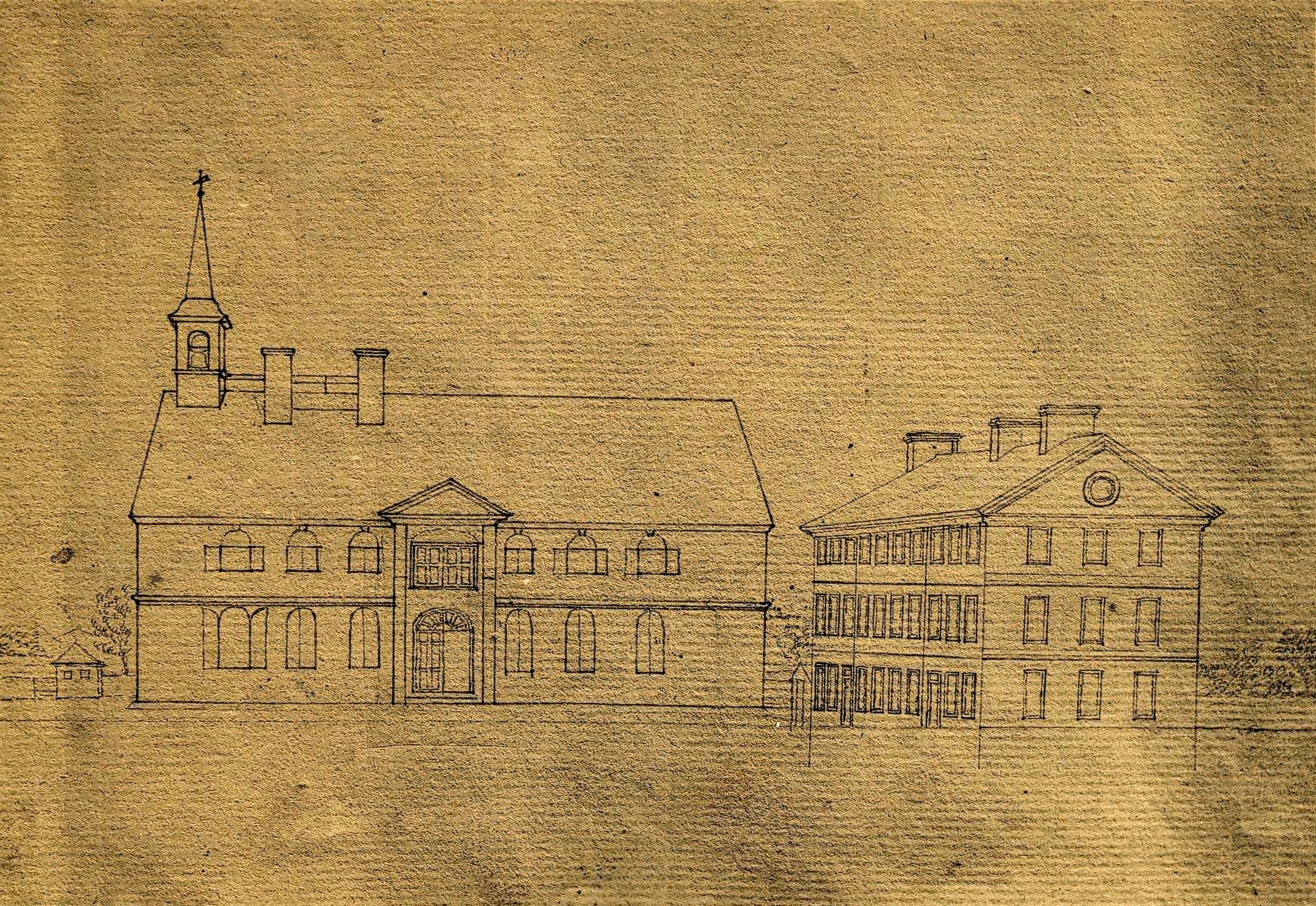 The original sponsors of the dormant building still owed considerable construction debts and asked Franklin's group to assume their debts and, accordingly, their inactive trusts. On February 1, 1750, the new board took over the building and trusts of the old board. On August 13, 1751, the "Academy of Philadelphia", using the great hall at 4th and Arch Streets, took in its first secondary students. A charity school also was chartered on July 13, 1753, by the intentions of the original "New Building" donors, although it lasted only a few years. On June 16, 1755, the " College of Philadelphia" was chartered, paving the way for the addition of undergraduate instruction. All three schools shared the same board of trustees and were considered to be part of the same institution. The first commencement exercises were held on May 17, 1757.
The institution of higher learning was known as the College of Philadelphia from 1755 to 1779. In 1779, not trusting then-provost the Reverend William Smith's "Loyalist" tendencies, the revolutionary State Legislature created a "University" (which in 1785 the legislature changed name to University of the State of Pennsylvania). The result was a schism, with Smith continuing to operate an attenuated version of the College of Philadelphia. In 1791, the legislature issued a new charter, merging the two institutions into a new University of Pennsylvania with twelve men from each institution on the new board of trustees.
Although Penn began operating as an academy or secondary school in 1751 and obtained its collegiate charter in 1755, it initially designated 1750 as its founding date; this is the year that appears on the first iteration of the university seal. Sometime later in its early history, Penn began to consider 1749 as its founding date and this year was referenced for over a century, including at the centennial celebration in 1849. In 1899, the board of trustees voted to adjust the founding date earlier again, this time to 1740, the date of "the creation of the earliest of the many educational trusts the University has taken upon itself". The board of trustees voted in response to a three-year campaign by Penn's General Alumni Society to retroactively revise the university's founding date to 1740 for a number of reasons, including to appear older than Princeton University, which had been chartered in 1746.
The original sponsors of the dormant building still owed considerable construction debts and asked Franklin's group to assume their debts and, accordingly, their inactive trusts. On February 1, 1750, the new board took over the building and trusts of the old board. On August 13, 1751, the "Academy of Philadelphia", using the great hall at 4th and Arch Streets, took in its first secondary students. A charity school also was chartered on July 13, 1753, by the intentions of the original "New Building" donors, although it lasted only a few years. On June 16, 1755, the " College of Philadelphia" was chartered, paving the way for the addition of undergraduate instruction. All three schools shared the same board of trustees and were considered to be part of the same institution. The first commencement exercises were held on May 17, 1757.
The institution of higher learning was known as the College of Philadelphia from 1755 to 1779. In 1779, not trusting then-provost the Reverend William Smith's "Loyalist" tendencies, the revolutionary State Legislature created a "University" (which in 1785 the legislature changed name to University of the State of Pennsylvania). The result was a schism, with Smith continuing to operate an attenuated version of the College of Philadelphia. In 1791, the legislature issued a new charter, merging the two institutions into a new University of Pennsylvania with twelve men from each institution on the new board of trustees.
Although Penn began operating as an academy or secondary school in 1751 and obtained its collegiate charter in 1755, it initially designated 1750 as its founding date; this is the year that appears on the first iteration of the university seal. Sometime later in its early history, Penn began to consider 1749 as its founding date and this year was referenced for over a century, including at the centennial celebration in 1849. In 1899, the board of trustees voted to adjust the founding date earlier again, this time to 1740, the date of "the creation of the earliest of the many educational trusts the University has taken upon itself". The board of trustees voted in response to a three-year campaign by Penn's General Alumni Society to retroactively revise the university's founding date to 1740 for a number of reasons, including to appear older than Princeton University, which had been chartered in 1746.
First university
The University of Pennsylvania also considers itself as the first university in the United States with both undergraduate and graduate studies. Penn has two claims to being the first university in the United States, according to the former university archives director Mark Frazier Lloyd: : (1) the 1765 founding of the first medical school in America made Penn the first institution to offer both "undergraduate" and professional education ("the 'de facto' position") : (2) the 1779 charter made it the first American institution of higher learning to take the name of "University" ("the 'de jure' position").
: (2) the 1779 charter made it the first American institution of higher learning to take the name of "University" ("the 'de jure' position").
Original campus
The Academy of Philadelphia, a secondary school for boys, began operations in 1751 in an unused church assembly hall building at 4th and Arch Streets which had sat unfinished and dormant for over a decade. Upon receiving a collegiate charter in 1755, the first classes for the College of Philadelphia were taught in the same building, in many cases to the same boys who had already graduated from The Academy of Philadelphia. When the British abandoned Philadelphia during the Revolutionary War, Penn's then only academic building "College Hall" served as temporary meeting site of the9th Street campus
 In 1801, the university moved to the unused
In 1801, the university moved to the unused  Classes were held in the mansion until 1829 when it was demolished. Architect William Strickland designed twin buildings on the same site, College Hall and Medical Hall (both 1829–1830), which formed the core of the Ninth Street Campus until Penn's move to West Philadelphia in the 1870s.
Classes were held in the mansion until 1829 when it was demolished. Architect William Strickland designed twin buildings on the same site, College Hall and Medical Hall (both 1829–1830), which formed the core of the Ninth Street Campus until Penn's move to West Philadelphia in the 1870s.
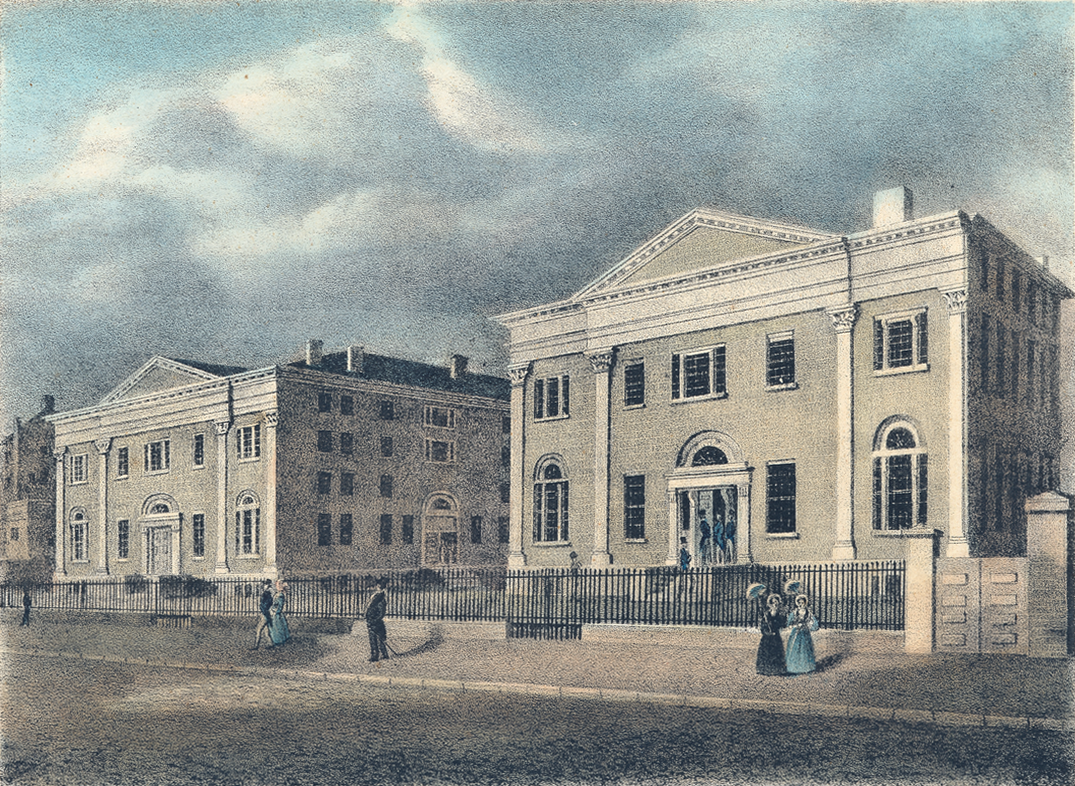
West Philadelphia campus
After being located in downtown Philadelphia for more than a century, the campus was moved across the Schuylkill River to property purchased from the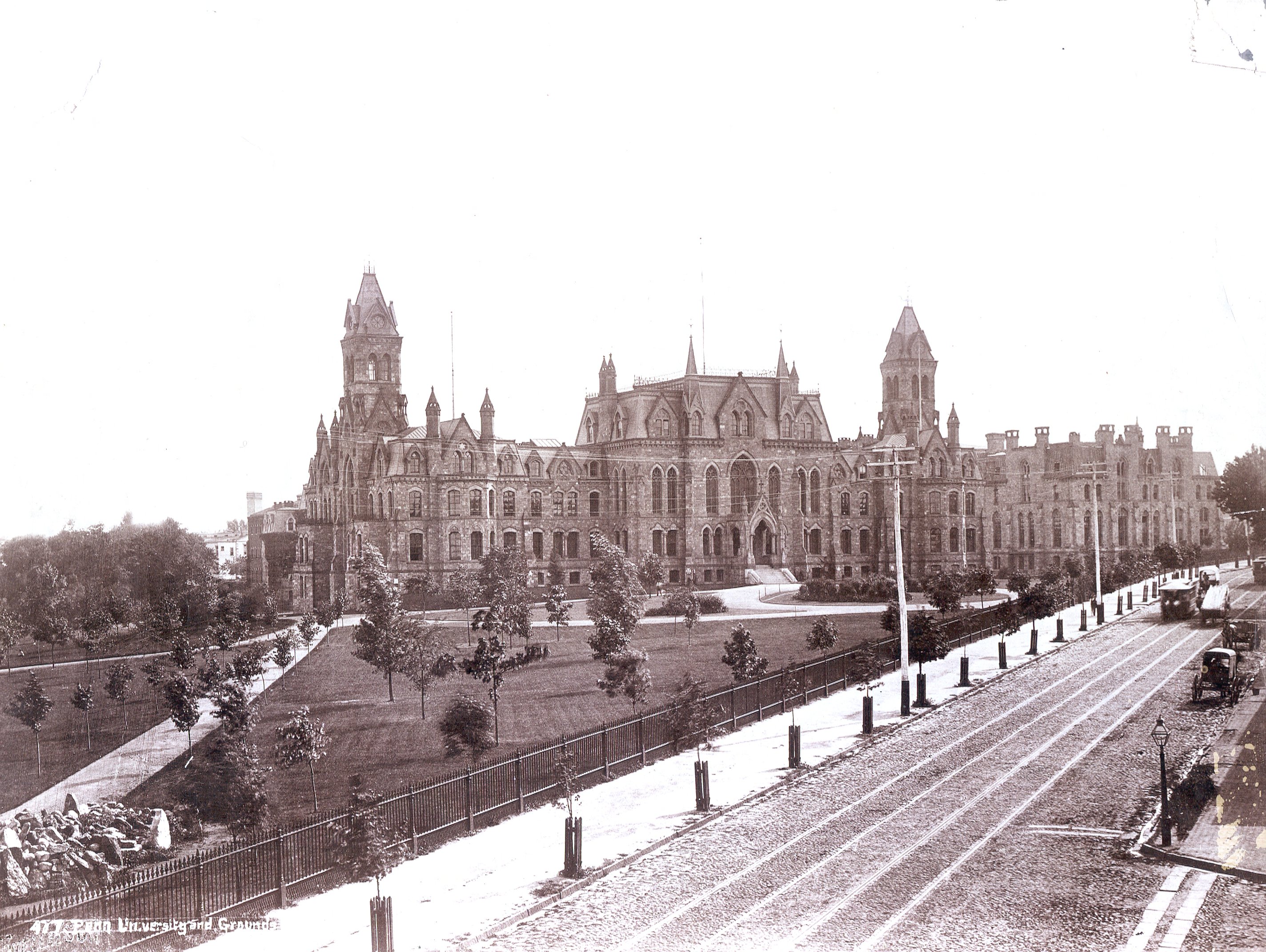
Residential university
In the 1750s, roughly 40 percent of Penn students needed lodging as they came from areas too far to commute including other colonies in the South or the West Indies. Before the completion of the construction of the first dormitory in 1765, out of town students were typically placed with "guardians" in the homes of faculty or in suitable boarding houses (such as the one run by widow Rachel Marks Graydon, mother of Penn College Class of 1775 (who did not graduate) alumnus Alexander Graydon). In 1765, the campus was expanded by the opening of the newly completed dormitory run by Ben Franklin's collaborator on study of electricity using electrostatic machines and related technology and Penn Professor and "chief master"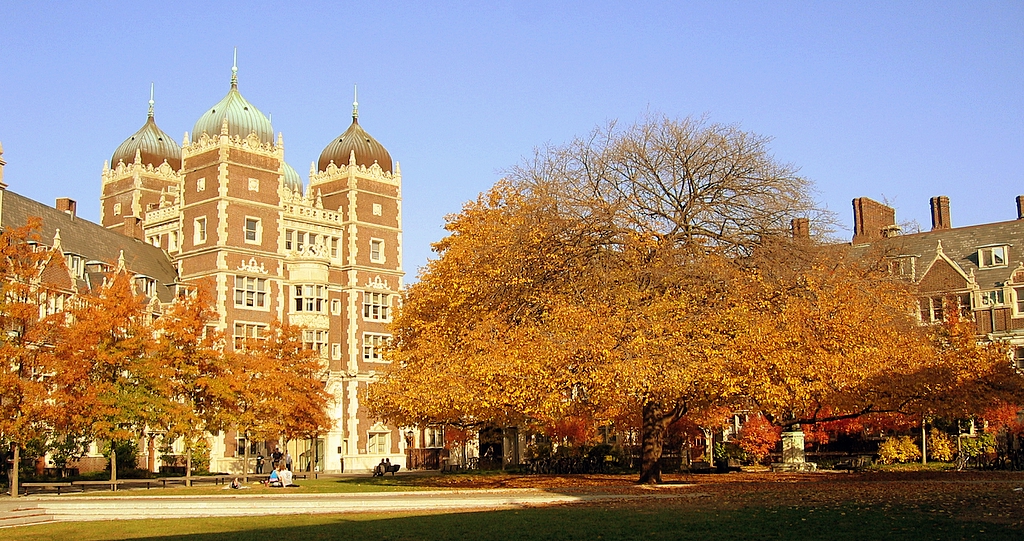 Penn had increasing need for housing in the last decade of 19th century and first decades of the twentieth century due to number of factors including its competition for students with peer institutions and active recruitment of foreign students.
With respect to the desire to compete with peer institutions to attract students from across the nation, such was aptly reported by George Henderson, President of the College Class of 1889 (in his monograph he distributed to his classmates at their 20th reunion), which charted not only Penn's strong growth in acreage and number of buildings over the prior two decades but also the near-quadrupling in the size of the student body, which was accommodated, in part, by building of the Men's Dormitory, the Quadrangle. Henderson argued that building The Quad played a vital role in attracting students, and made an impassioned plea for its expansion:George Henderson, ''Old Penn and Other Universities: A Comparative Study of Twenty Years Progress of The University of Pennsylvania'', (U. of Pa. Class of '89) June 1909 Monograph in Penn Archives for Class of 1889: Box 9, Folder
Penn had increasing need for housing in the last decade of 19th century and first decades of the twentieth century due to number of factors including its competition for students with peer institutions and active recruitment of foreign students.
With respect to the desire to compete with peer institutions to attract students from across the nation, such was aptly reported by George Henderson, President of the College Class of 1889 (in his monograph he distributed to his classmates at their 20th reunion), which charted not only Penn's strong growth in acreage and number of buildings over the prior two decades but also the near-quadrupling in the size of the student body, which was accommodated, in part, by building of the Men's Dormitory, the Quadrangle. Henderson argued that building The Quad played a vital role in attracting students, and made an impassioned plea for its expansion:George Henderson, ''Old Penn and Other Universities: A Comparative Study of Twenty Years Progress of The University of Pennsylvania'', (U. of Pa. Class of '89) June 1909 Monograph in Penn Archives for Class of 1889: Box 9, Folder (PDF)
/ref> With respect to the active recruitment of foreign students, for example, Penn's first director of publicity translated a Penn recruiting brochure into Spanish and circulated approximately 10,000 copies throughout Latin America. The success of such efforts were evident in fall of 1910 when Vice Provost Edgar Fahs Smith (who the following year would start a ten-year tenure as Penn's provost) formally welcomed to Penn students from 40 different nations at an annual party. Vice Provost Fahs spoke about how Penn wanted to "bring together students of different countries and break down misunderstandings existing between them". Since it was difficult to house the international students due to the then socially acceptable and legally permissible racist housing regulations extant in Philadelphia and across the United States, in fall of 1911, The Christian Association at The University of Pennsylvania hired as its first Foreign Mission Secretary, Reverend Alpheus Waldo Stevenson. By 1912, Stevenson focused almost all his efforts on the foreign students at Penn who needed help finding housing resulting in the Christian Association, buying 3905 Spruce Street contiguous to Penn's campus. By January 1, 1918, 3905 Spruce Street officially opened under the sponsorship of the Christian Association as a Home for Foreign Students, which came to be known as the International Students' House with Reverend Stevenson as its first director. The International Students' House provided " ... counseling and information services for a host of problems foreign students might encounter, including language, financial, health and diet, immigration and technical problems as well as maladjustment to living in the United States. It was also used for recreation and leisure, as lounges had radio, phonograph and television facilities and there were game and reception rooms. The International Students' House also provided for programs including forums, debates, lectures, panels and planned trips and outings as well as weekend activities such as dances, films and game nights. Also, for the next thirty-three years, the International Students' House would be sponsored by the Christian Association of the University of Pennsylvania." The success of efforts to reach out to the international students' was reported in 1921 when the official Penn publicity department reported that of the over 12,000 students at Penn (who came from all 50 states), 253 students came from at least 50 foreign countries and foreign territories, including India, South Africa, New Zealand, Australia, " ... every Latin American country, and most of the Oriental and European nations". By 1931, first-year students were required to live in the quadrangle unless they received official permission to live with their families or other relatives. However, throughout this period and into the early post-World War II period, the undergraduate schools of the university continued to have a large commuting population. As an example, into the late 1940s, two-thirds of Penn women students were commuters. After World War II, Penn began a capital spending program to overhaul its campus, especially student housing. A large number of students migrating to universities under the GI Bill, and the resultant increase in Penn's student population, highlighted that Penn had outgrown previous expansions, which ended during the Depression-era. Nonetheless, in addition to a significant student population from the Delaware Valley, Penn attracted international students from at least 50 countries and from all 50 states as early as the second decade of the 20th century. Referring to the expansion in students (particularly from the Delaware Valley) due to Servicemen's Readjustment Act of 1944 (commonly known as the G.I. Bill), Penn Trustee Paul Miller remarked about Penn's undergraduate housing situation in the post World War Two era that: " e bricks-and-mortar Capital Campaign of the Sixties...built the facilities that turned Penn from a commuter school to a residential one...." By 1961, 79% of male undergraduates and 57% of female undergraduates lived on campus.
Controversies
From 1930 to 1966, there were 54 documented Rowbottom riots, a student tradition of rioting which included everything from car smashing to panty raids. After 1966, there were five more instances of "Rowbottoms", the latest occurring in 1980. In 1965, Penn students learned that the university was sponsoring research projects for the United States' chemical and biological weapons program. According toEducational innovations
 Penn's educational innovations include the nation's first medical school in 1765; the first university teaching hospital in 1874; the Wharton School, the world's first collegiate business school, in 1881; the first American student union building, Houston Hall, in 1896; the country's second school of veterinary medicine; and the home of ENIAC, the world's first electronic, large-scale, general-purpose digital computer in 1946. Penn is also home to the oldest continuously functioning psychology department in North America and is where the American Medical Association was founded. In 1921, Penn was also the first university to award a PhD in economics to an African-American woman, Sadie Tanner Mossell Alexander (in economics).
Penn's educational innovations include the nation's first medical school in 1765; the first university teaching hospital in 1874; the Wharton School, the world's first collegiate business school, in 1881; the first American student union building, Houston Hall, in 1896; the country's second school of veterinary medicine; and the home of ENIAC, the world's first electronic, large-scale, general-purpose digital computer in 1946. Penn is also home to the oldest continuously functioning psychology department in North America and is where the American Medical Association was founded. In 1921, Penn was also the first university to award a PhD in economics to an African-American woman, Sadie Tanner Mossell Alexander (in economics).

Motto
Penn's motto is based on a line from In 1932, all elements of the seal were revised. As part of the redesign, it was decided that the new motto "mutilated" Horace, and it was changed to its present wording, la, Leges Sine Moribus Vanae, lit=Laws without morals reuseless, link=no, label=none.
In 1932, all elements of the seal were revised. As part of the redesign, it was decided that the new motto "mutilated" Horace, and it was changed to its present wording, la, Leges Sine Moribus Vanae, lit=Laws without morals reuseless, link=no, label=none.
Seal

Campus
 Much of Penn's architecture was designed by the Philadelphia-based architecture firm
Much of Penn's architecture was designed by the Philadelphia-based architecture firm  The present core campus covers over in a contiguous area of West Philadelphia's University City section, whereas the older heart of the campus comprises the
The present core campus covers over in a contiguous area of West Philadelphia's University City section, whereas the older heart of the campus comprises the 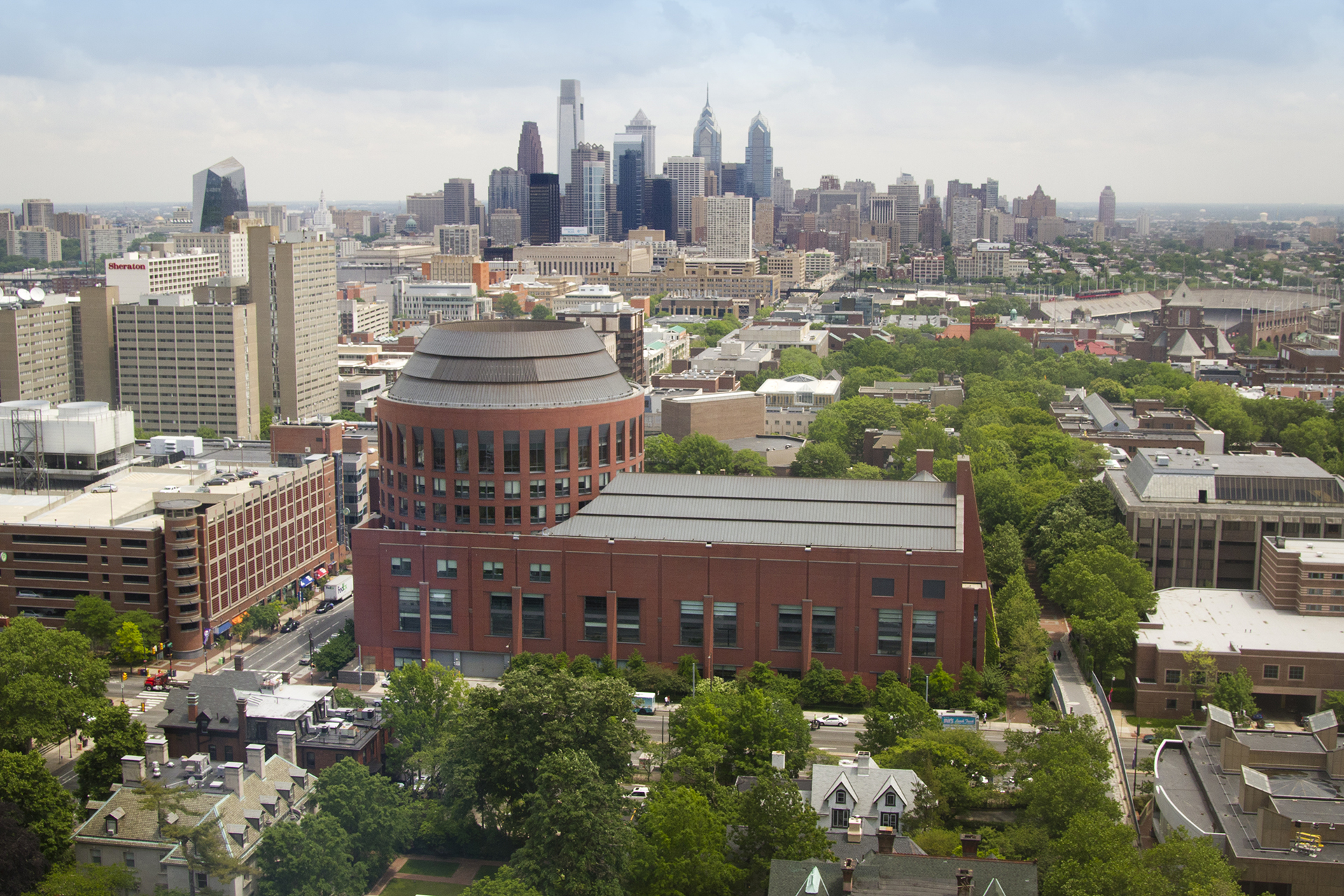 The surrounding neighborhood includes several restaurants, bars, a large upscale grocery store, and movie theater on the western edge of campus. Penn's core campus borders
The surrounding neighborhood includes several restaurants, bars, a large upscale grocery store, and movie theater on the western edge of campus. Penn's core campus borders 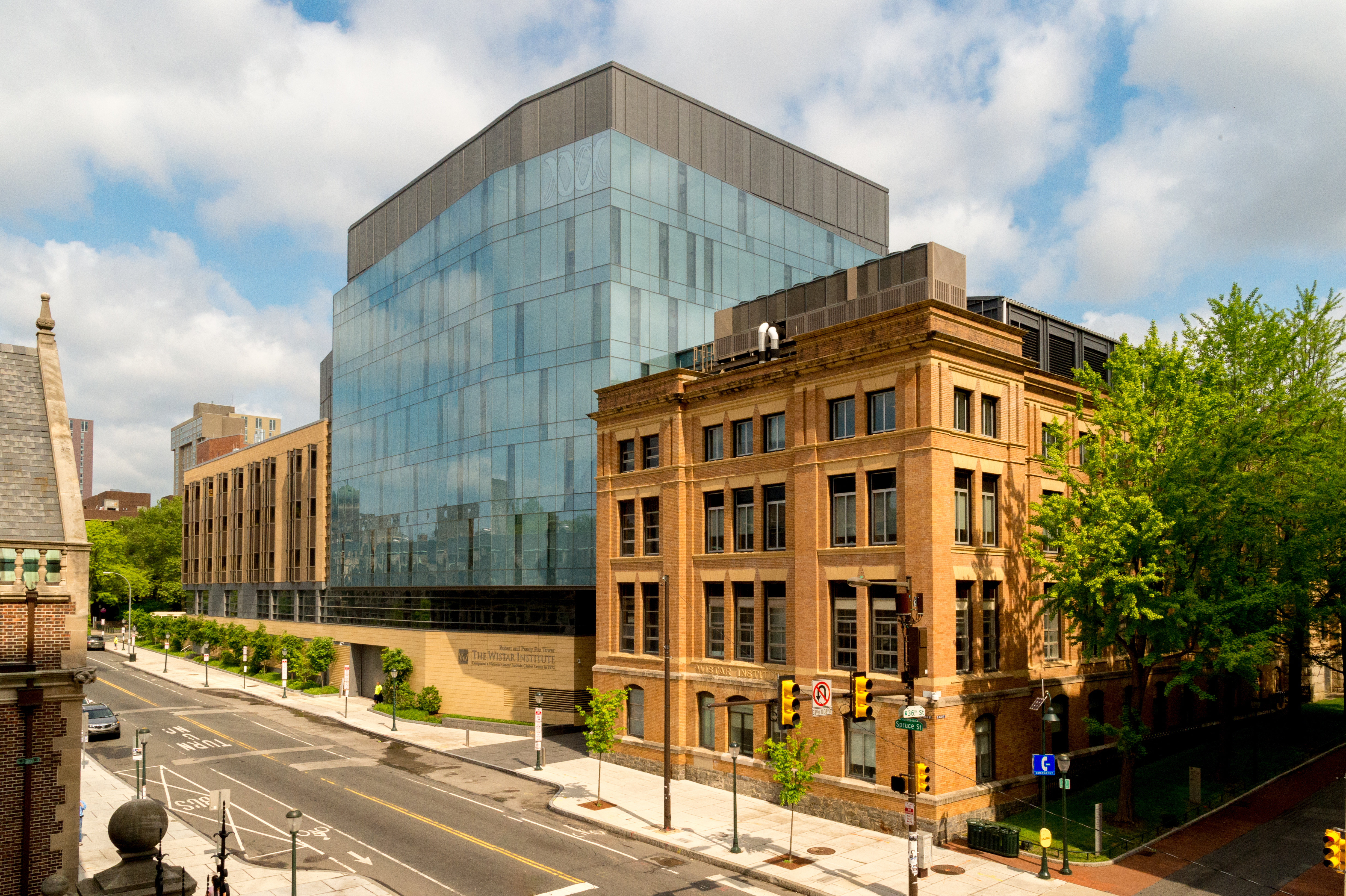 The Module 6 Utility Plant and Garage at Penn was designed by BLT Architects and completed in 1995. Module 6 is located at 38th and Walnut and includes spaces for 627 vehicles, of storefront retail operations, a 9,500-ton chiller module and corresponding extension of the campus chilled water loop, and a 4,000-ton ice storage facility.
In 2010, in its first significant expansion across the Schuylkill River, Penn purchased at the northwest corner of 34th Street and Grays Ferry Avenue, the then site of
The Module 6 Utility Plant and Garage at Penn was designed by BLT Architects and completed in 1995. Module 6 is located at 38th and Walnut and includes spaces for 627 vehicles, of storefront retail operations, a 9,500-ton chiller module and corresponding extension of the campus chilled water loop, and a 4,000-ton ice storage facility.
In 2010, in its first significant expansion across the Schuylkill River, Penn purchased at the northwest corner of 34th Street and Grays Ferry Avenue, the then site of Parks and arboreta
In 2007, Penn acquired about between the campus and the Schuylkill River (the former site of the Philadelphia Civic Center and a nearby site owned by the United States Postal Service). Dubbed the Postal Lands, the site extends from Market Street on the north to Penn's Bower Field on the south, including the former main regional U.S. Postal Building at 30th and Market Streets, now the regional office for the U.S. Internal Revenue Service. Over the next decade, the site became the home to educational, research,New Bolton Center veterinary campus
 Penn also owns the
Penn also owns the Libraries
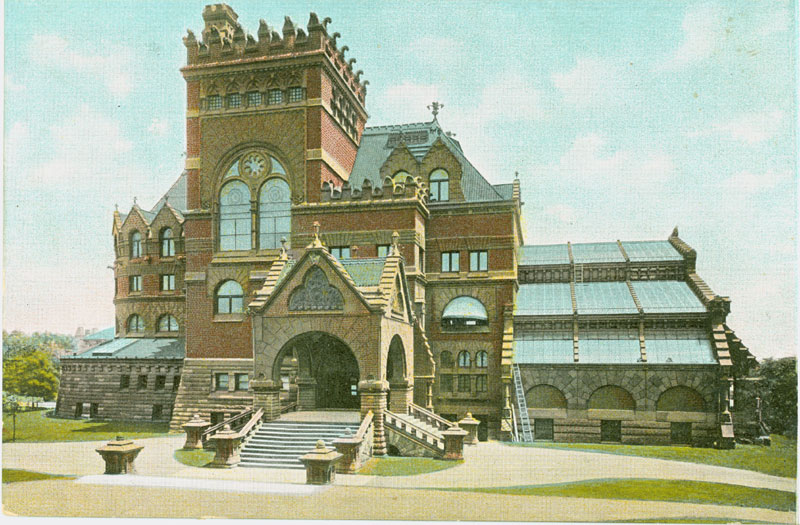 Penn's library began in 1750 with a donation of books from cartographer Lewis Evans. Twelve years later, then-provost William Smith sailed to England to raise additional funds to increase the collection size. Benjamin Franklin was one of the libraries' earliest donors and, as a trustee, saw to it that funds were allocated for the purchase of texts from London, many of which are still part of the collection, more than 250 years later.
Penn library system has grown into a system of 15 libraries (13 are on the contiguous campus) with 400 full-time equivalent (FTE) employees and a total operating budget of more than $48 million. The library system has 6.19 million book and serial volumes as well as 4.23 million microform items and 1.11 million e-books. It subscribes to over 68,000 print serials and e-journals.
Penn has the following fifteen libraries located on campus, associated by school or subject area: (1) Annenberg (School of Communications), located in the Annenberg School; (2) Biddle (Law), located in the Law School; (3) Biomedical, located adjacent to the Robert Wood Johnson Pavilion of the Medical School; (4) Chemistry, located in the 1973 Wing of the Chemistry Building; (5) Dental Medicine; (6) Engineering, located on the second floor of the Towne Building in the Engineering School; (7) Fine Arts, located within the Fisher Fine Arts Library; (8) Katz Center for Advanced Judaic Studies, located at 420 Walnut Street, near Independence Hall and Washington Square; (9) Lea Library, located within the Van Pelt Library; (10) Lippincott (Wharton School), located on the second floor of the Van Pelt-Dietrich Library Center; (11) Math/Physics/Astronomy, located on the third floor of David Rittenhouse Laboratory; (12) Museum (Archaeology); (13) Rare Books and Manuscripts; (14) Van Pelt-Dietrich Library Center (Humanities and Social Sciences) – location of
Penn's library began in 1750 with a donation of books from cartographer Lewis Evans. Twelve years later, then-provost William Smith sailed to England to raise additional funds to increase the collection size. Benjamin Franklin was one of the libraries' earliest donors and, as a trustee, saw to it that funds were allocated for the purchase of texts from London, many of which are still part of the collection, more than 250 years later.
Penn library system has grown into a system of 15 libraries (13 are on the contiguous campus) with 400 full-time equivalent (FTE) employees and a total operating budget of more than $48 million. The library system has 6.19 million book and serial volumes as well as 4.23 million microform items and 1.11 million e-books. It subscribes to over 68,000 print serials and e-journals.
Penn has the following fifteen libraries located on campus, associated by school or subject area: (1) Annenberg (School of Communications), located in the Annenberg School; (2) Biddle (Law), located in the Law School; (3) Biomedical, located adjacent to the Robert Wood Johnson Pavilion of the Medical School; (4) Chemistry, located in the 1973 Wing of the Chemistry Building; (5) Dental Medicine; (6) Engineering, located on the second floor of the Towne Building in the Engineering School; (7) Fine Arts, located within the Fisher Fine Arts Library; (8) Katz Center for Advanced Judaic Studies, located at 420 Walnut Street, near Independence Hall and Washington Square; (9) Lea Library, located within the Van Pelt Library; (10) Lippincott (Wharton School), located on the second floor of the Van Pelt-Dietrich Library Center; (11) Math/Physics/Astronomy, located on the third floor of David Rittenhouse Laboratory; (12) Museum (Archaeology); (13) Rare Books and Manuscripts; (14) Van Pelt-Dietrich Library Center (Humanities and Social Sciences) – location of 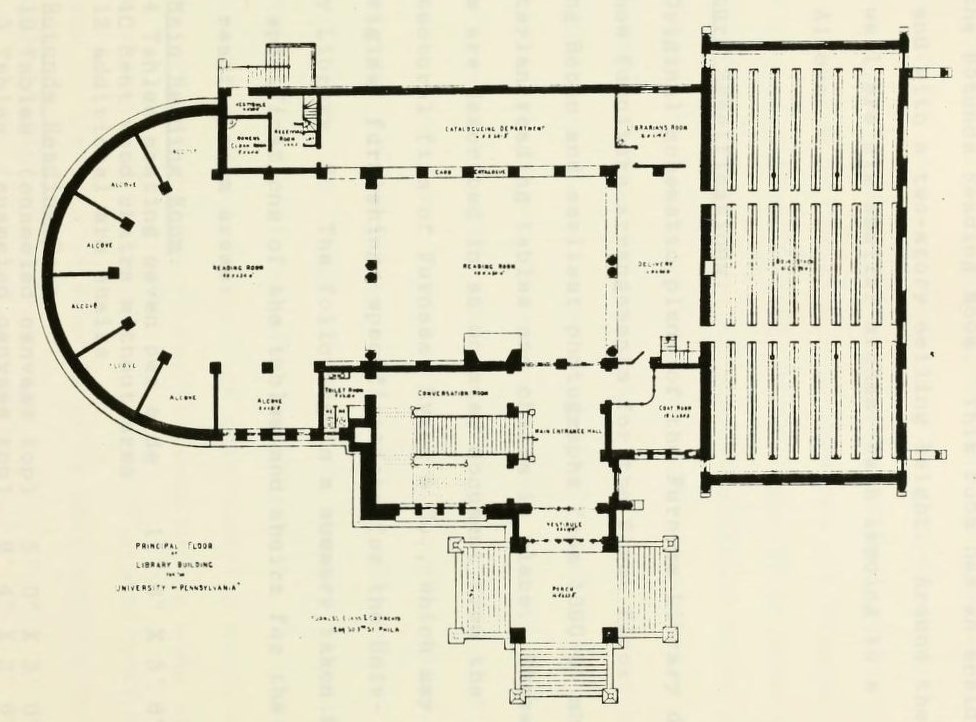 The Fine Arts Library was built to be Penn's main library (and first to have its own building). The then main library was designed by
The Fine Arts Library was built to be Penn's main library (and first to have its own building). The then main library was designed by Art installations
The campus has more than 40 notable art installations, in part because of a 1959 Philadelphia ordinance requiring total budget for new construction or major renovation projects (where any governmental resources are used) to include 1% for art (Philadelphia's ordinance created the first such program in the country) to be used to pay for installation of site-specific public art, in part because of many alumni who collect and donate art to Penn, and in part because of the presence of the University of Pennsylvania School of Design on campus. In 2020, Penn installed ''Brick House'', a monumental work of art (a "critical fabulation" in language used by its creator,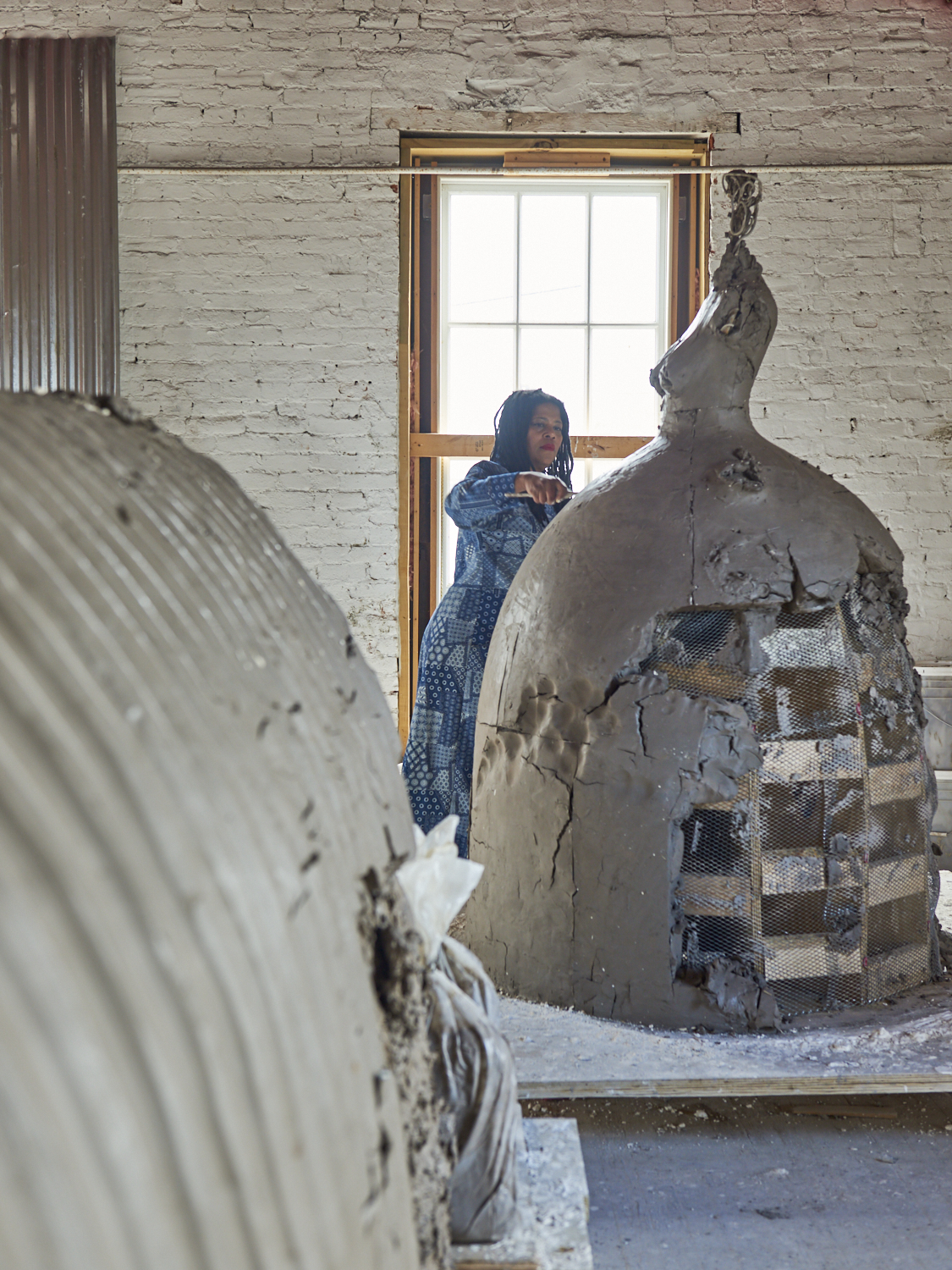 This bronze sculpture, which is high and in diameter at its base, depicts an African woman's head (crowned with an afro framed by cornrow braids) atop a form that resembles both a skirt and a clay house. At the installation, Penn president Amy Guttman proclaimed that "Ms. Leigh's sculpture brings a striking presence of strength, grace, and beauty—along with an ineffable sense of mystery and resilience—to a central crossroad of Penn's campus."
The ''Covenant'', better known to the student body as "Dueling Tampons" or "The Tampons", is a large red structure created by Alexander Liberman and located on Locust Walk as a gateway to the high-rise residences "super block". It was installed in 1975 and is made of rolled sheets of milled steel.
This bronze sculpture, which is high and in diameter at its base, depicts an African woman's head (crowned with an afro framed by cornrow braids) atop a form that resembles both a skirt and a clay house. At the installation, Penn president Amy Guttman proclaimed that "Ms. Leigh's sculpture brings a striking presence of strength, grace, and beauty—along with an ineffable sense of mystery and resilience—to a central crossroad of Penn's campus."
The ''Covenant'', better known to the student body as "Dueling Tampons" or "The Tampons", is a large red structure created by Alexander Liberman and located on Locust Walk as a gateway to the high-rise residences "super block". It was installed in 1975 and is made of rolled sheets of milled steel.
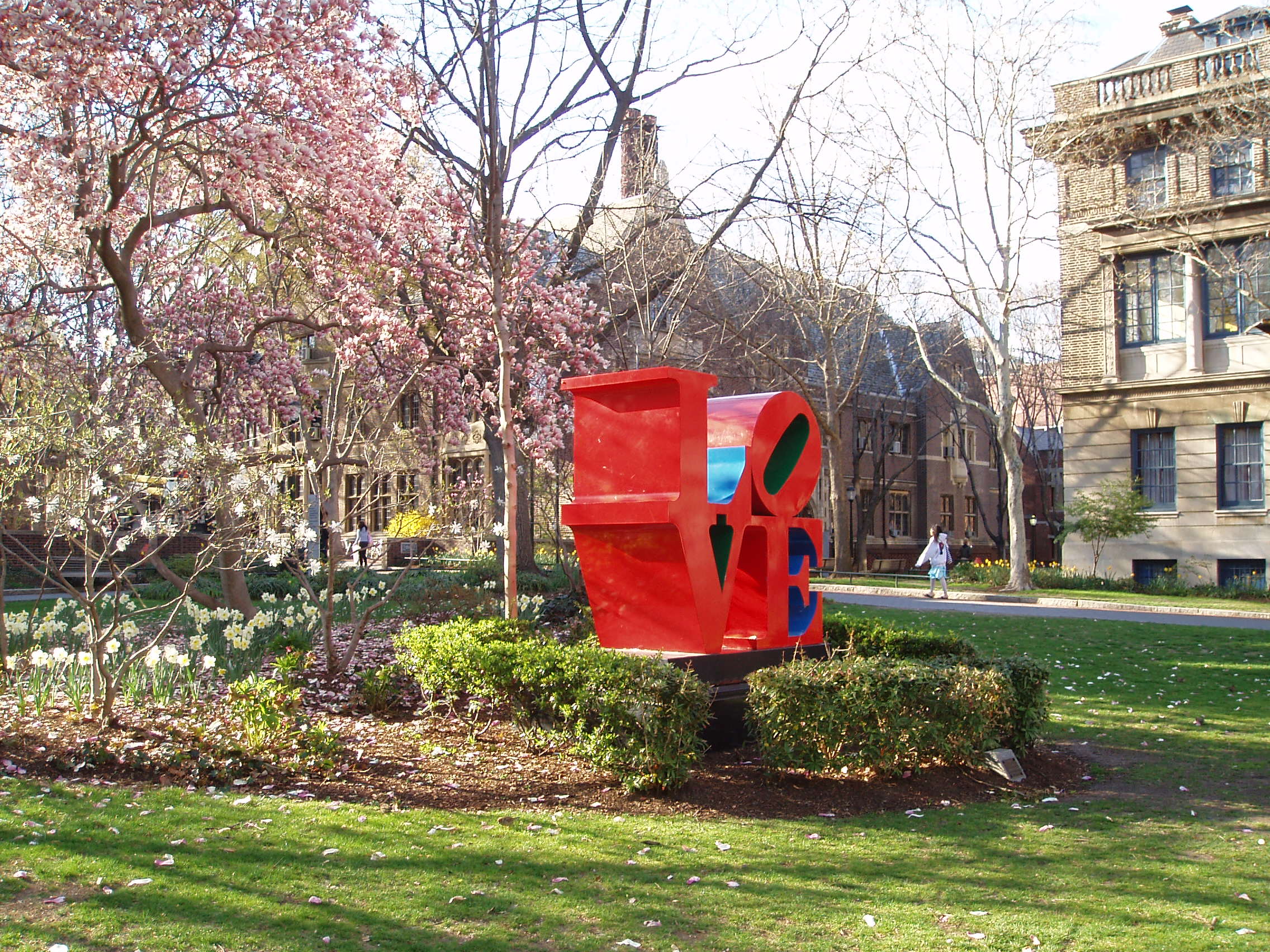 In 2019, the
In 2019, the 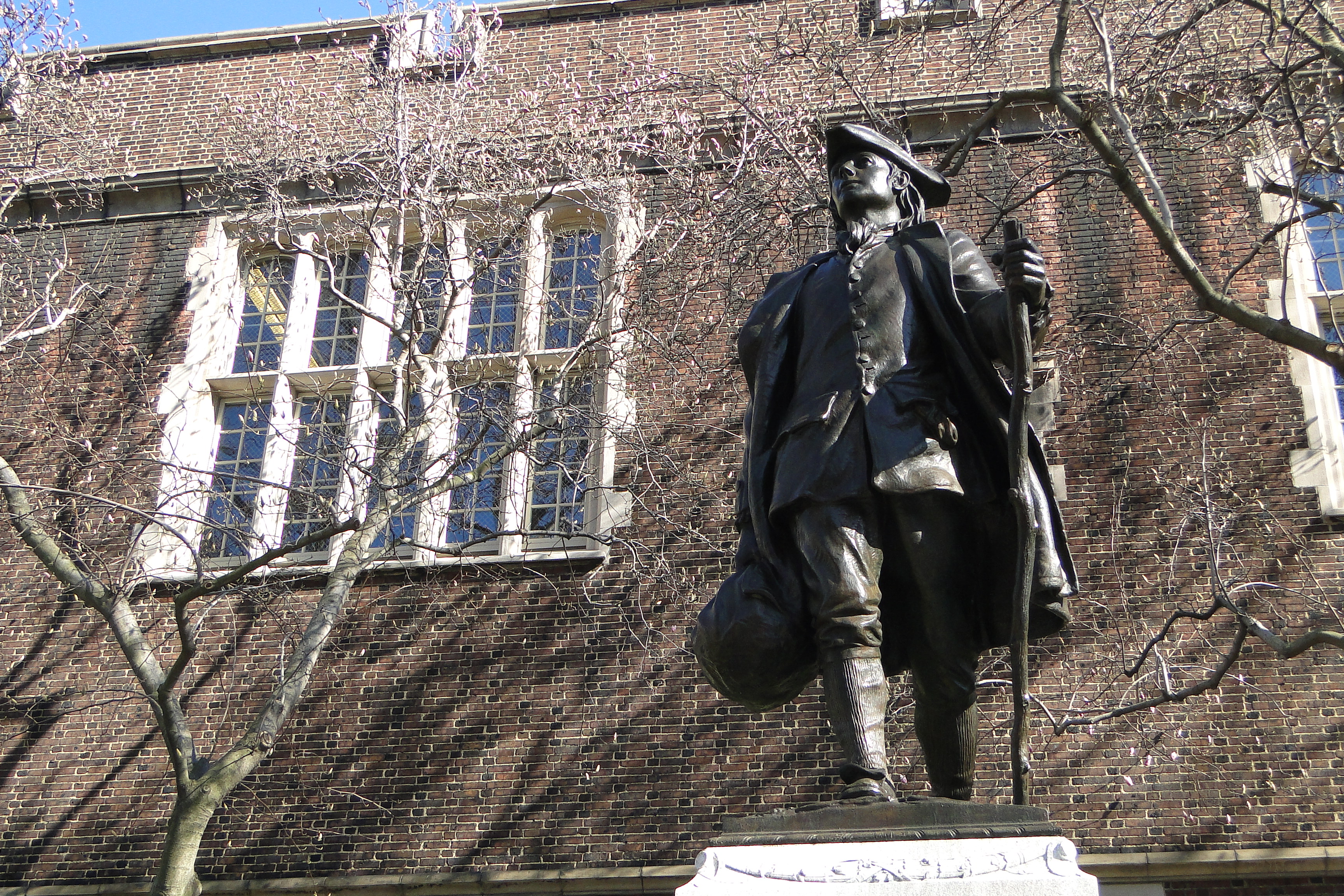 Penn is presently re-evaluating all of its public art and has formed a Campus Iconography Group led by Penn Design dean
Penn is presently re-evaluating all of its public art and has formed a Campus Iconography Group led by Penn Design dean The Penn Museum
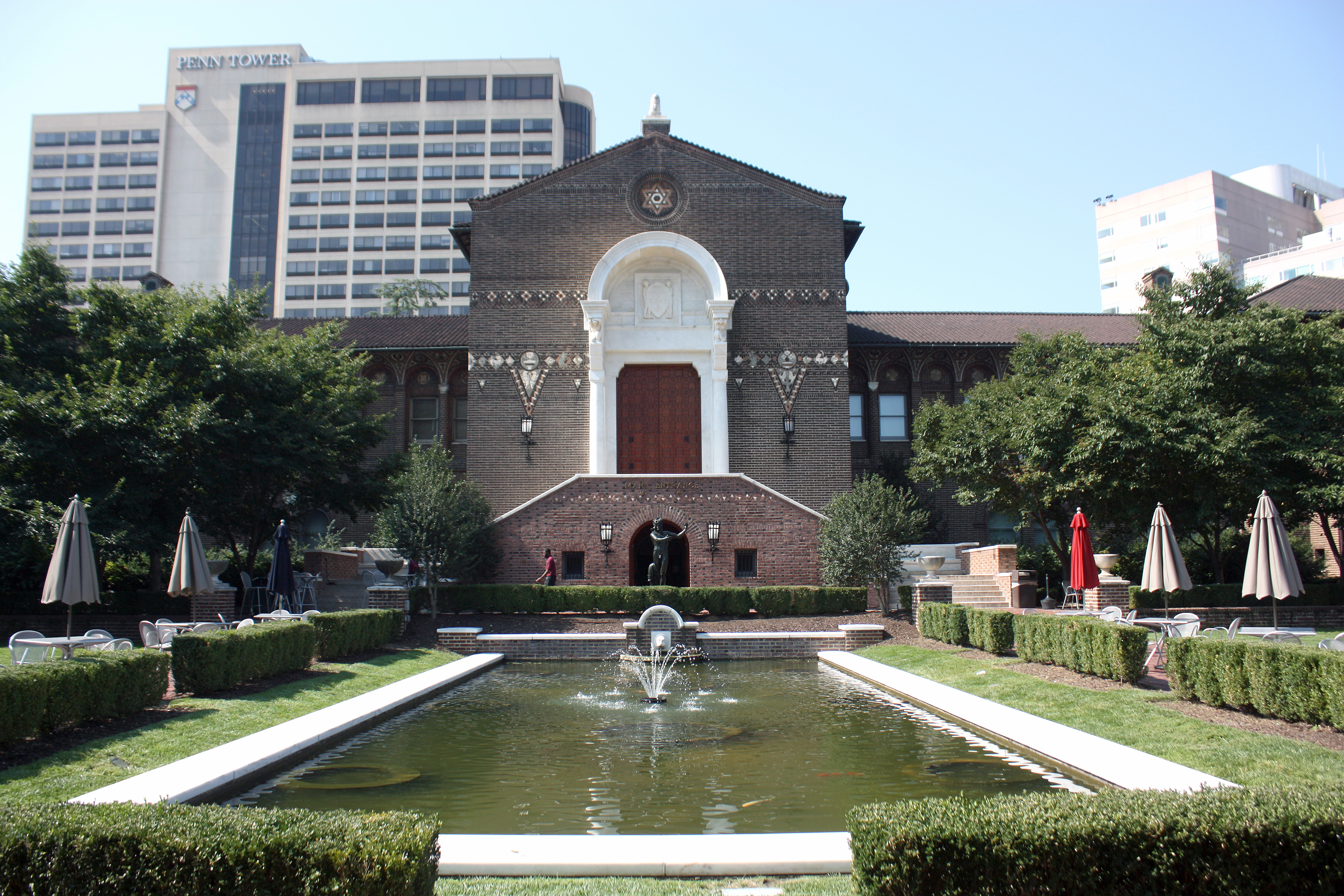 Since the Penn Museum was founded in 1887, it has taken part in 400 research projects worldwide. The museum's first project was an excavation of
Since the Penn Museum was founded in 1887, it has taken part in 400 research projects worldwide. The museum's first project was an excavation of  The sphinx was discovered in 1912 by the British archeologist, Sir William Matthew Flinders Petrie, during an excavation of the ancient Egyptian city of
The sphinx was discovered in 1912 by the British archeologist, Sir William Matthew Flinders Petrie, during an excavation of the ancient Egyptian city of Other Penn museums, galleries, and art collections
Residences
 In 2019, Penn announced the construction of New College House West, which is planned to open in the fall of 2021.
Penn students in Junior or Senior year may live in the 45 sororities and fraternities governed by three student-run governing councils, Interfraternity Council, Intercultural Greek Council, and Panhellenic Council.
In 2019, Penn announced the construction of New College House West, which is planned to open in the fall of 2021.
Penn students in Junior or Senior year may live in the 45 sororities and fraternities governed by three student-run governing councils, Interfraternity Council, Intercultural Greek Council, and Panhellenic Council.
Campus police
The University of Pennsylvania Police Department (UPPD) is the largest, private police department in Pennsylvania, with 117 members. All officers are sworn municipal police officers and retain general law enforcement authority while on the campus.Academics and interdisciplinary focus
Penn's "One University Policy" allows students to enroll in classes in any of Penn's twelve schools.Meyerson, Martin (January 29, 1973). "Report of the University Development Commission" (PDF). ''upenn.com''. Retrieved June 16, 2018. The College of Arts and Sciences is the undergraduate division of the School of Arts and Sciences. The School of Arts and Sciences also contains the Graduate Division and the College of Liberal and Professional Studies, which is home to the Fels Institute of Government, the master's programs in Organizational Dynamics, and the Environmental Studies (MES) program.Admissions
Undergraduate admissions to the University of Pennsylvania is considered by '' US News'' to be "most selective". Admissions officials consider a student's GPA to be a very important academic factor, with emphasis on an applicant's high school class rank and letters of recommendation. For the class of 2026, entering in the fall of 2022, the university received 54,588 applications. '' The Atlantic'' also ranked Penn among the 10 most selective schools in the country. At the graduate level, based on admission statistics from ''U.S. News & World Report'', Penn's most selective programs include its law school, the health care schools (medicine, dental medicine, nursing, veterinary), and Wharton business school. SAT and ACT ranges are from the 25th to the 75th percentile.Coordinated dual-degree, accelerated, interdisciplinary programs
Penn offers unique and specialized coordinated dual-degree (CDD) programs, which selectively award candidates degrees from multiple schools at the university upon completion of graduation criteria of both schools in addition to program-specific programs and senior capstone projects. Additionally, there are accelerated and interdisciplinary programs offered by the university. These undergraduate programs include: * Huntsman Program in International Studies and Business * Jerome Fisher Program in Management and Technology (M&T) * Roy and Diana Vagelos Program in Life Sciences and Management (LSM) * Nursing and Health Care Management (NHCM) * Roy and Diana Vagelos Integrated Program in Energy Research (VIPER) * Vagelos Scholars Program in Molecular Life Sciences (MLS) * Singh Program in Networked and Social Systems Engineering (NETS) * Digital Media Design (DMD) * Computer and Cognitive Science * Accelerated 7-Year Bio-Dental Program * Accelerated 6-Year Law and Medicine Program Dual-degree programs that lead to the same multiple degrees without participation in the specific above programs are also available. Unlike CDD programs, "dual degree" students fulfill requirements of both programs independently without the involvement of another program. Specialized dual-degree programs include Liberal Studies and Technology as well as an Artificial Intelligence: Computer and Cognitive Science Program. Both programs award a degree from the College of Arts and Sciences and a degree from the School of Engineering and Applied Sciences. Also, the Vagelos Scholars Program in Molecular Life Sciences allows its students to either double major in the sciences or submatriculate and earn both a BA and an MS in four years. The most recent Vagelos Integrated Program in Energy Research (VIPER) was first offered for the class of 2016. A joint program of Penn's School of Arts and Sciences and the School of Engineering and Applied Science, VIPER leads to dual Bachelor of Arts and Bachelor of Science in Engineering degrees by combining majors from each school.Academic medical center and biomedical research complex
In 2018, the university's nursing school was ranked number one by Quacquarelli Symonds. That year, Quacquarelli Symonds also ranked Penn's school of Veterinary Medicine sixth. In 2019, the Perelman School of Medicine was named the third-best medical school for research in ''U.S. News & World Report's'' 2020 ranking. The University of Pennsylvania Health System (also known as UPHS) is a multi-hospitalResearch, innovations and discoveries
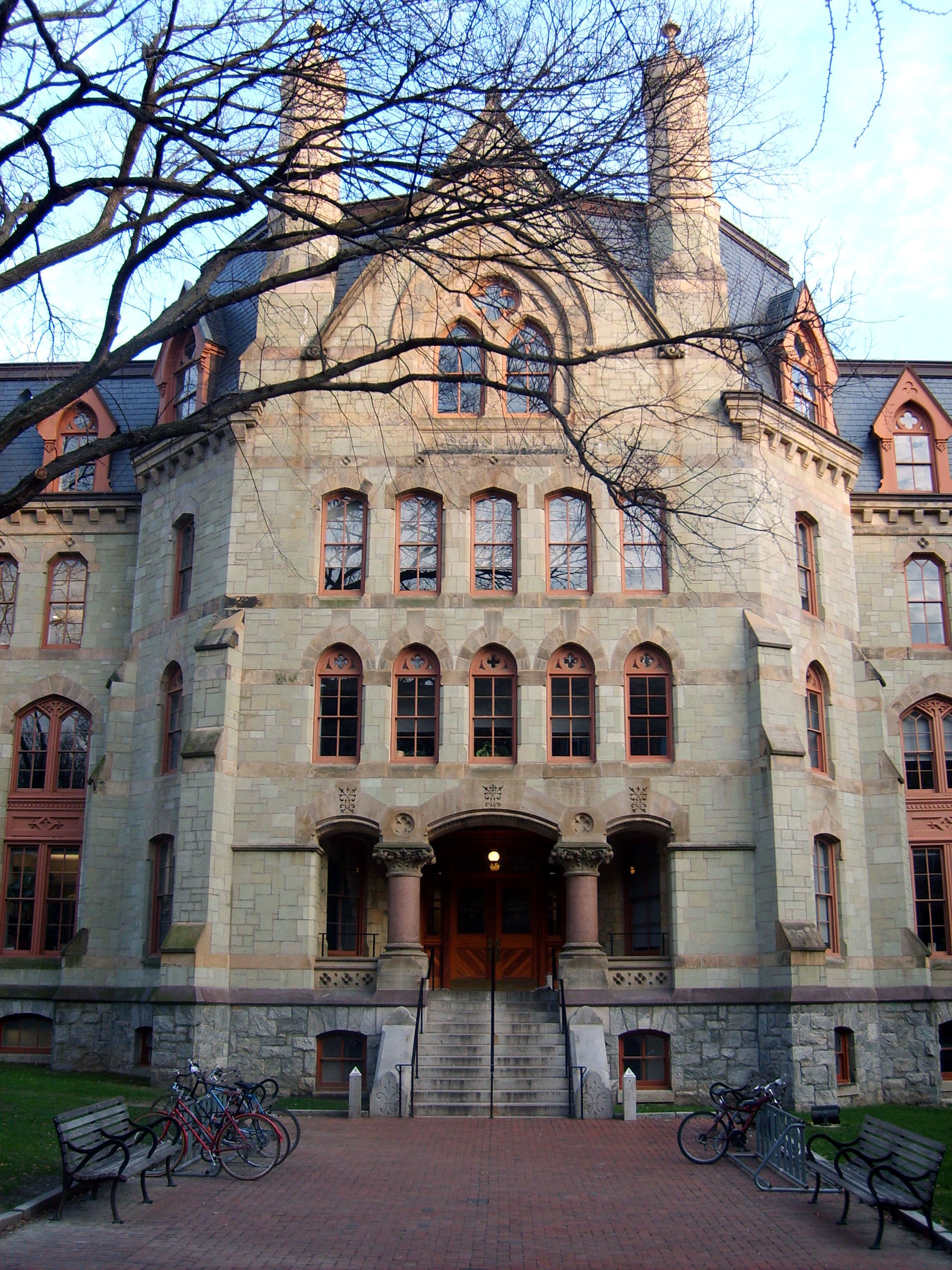
 Penn is
Penn is Academic profile and rankings
International partnerships
Students can study abroad for a semester or a year at partner institutions such as the London School of Economics, University of Edinburgh, Chinese University of Hong Kong, University of Melbourne, Sciences Po, University of Queensland, University College London, King's College London, Hebrew University of Jerusalem and ETH Zurich.Rankings
''U.S. News & World Report''s 2022 rankings place Penn seventh among national universities in the United States and Center for World University Rankings' ("CWUR") 2020/2021 survey also ranks Penn as the eighth best university in the world. The Princeton Review included Penn in its Dream Colleges list in 2015. As reported by ''USA Today'', Penn was ranked first in the United States by College Factual for 2015. In their 2021 edition, Penn was ranked tenth in the nation by QS (Quacquarelli Symonds). In the 2020 edition, Penn was ranked 15th in the world by the ''QS World University Rankings'' and in 2019, 17th by the ''Academic Ranking of World Universities'' (ARWU) and 12th by the ''Times Higher Education World University Rankings''. In 2019, it ranked 12th among the universities around the world by ''SCImago Institutions Rankings''. According to the 2015 ARWU ranking, Penn is also the eighth- and ninth-best university in the world for economics/business and social sciences studies, respectively. University of Pennsylvania ranked 12th among 300 Best World Universities in 2012 compiled by Human Resources & Labor Review (HRLR) on Measurements of World's Top 300 Universities Graduates' Performance. The Center for Measuring University Performance places Penn in the first tier of the United States' top research universities (tied with Columbia, MIT and Stanford), based on research expenditures, faculty awards, PhD granted and other academic criteria. Penn was also ranked 18th of all U.S. colleges and universities in terms of R&D expenditures in fiscal year 2013 by the National Science Foundation. The High Impact Universities research performance index ranks Penn eighth in the world, whereas the 2010 Performance Ranking of Scientific Papers for World Universities (published by the Higher Education Evaluation and Accreditation Council of Taiwan) ranks Penn 11th in the world for 2007, 2008 and 2010 and ninth for 2009. The Performance Ranking of Scientific Papers measures universities' research productivity, research impact, and research excellence based on the scientific papers published by their academic staff. The SCImago Journal Rank, SCImago Institutions Rankings World Report 2012, which ranks world universities, national institutions and academies in terms of research output, ranks Penn seventh nationally among U.S. universities (2nd in the Ivy League behind Harvard) and 28th in the world overall (the first being France's French National Centre for Scientific Research, Centre National de la Recherche Scientifique). The Mines ParisTech: Professional Ranking of World Universities, Mines ParisTech International Professional Ranking, which ranks universities on the basis of the number of alumni listed among CEOs in the 500 largest worldwide companies, ranks Penn 11th worldwide and second nationally behind Harvard. According to a ''U.S. News'' article in 2010, Penn is tied for second (tied with Dartmouth College and Tufts University) for the number of undergraduate alumni who are current Fortune 100 CEOs. ''Forbes'' ranked Penn 17th, based on a variety of criteria. In 2022, Poets & Quants ranked the undergraduate Wharton business school as the top business school in the nation for the fifth year in a row.Graduate and professional programs
Among its professional schools, the school of University of Pennsylvania Graduate School of Education, education was ranked number one in 2021 and Wharton School of the University of Pennsylvania, Wharton School of Business was ranked number one in 2022, the Annenberg School for Communication at the University of Pennsylvania, communication, University of Pennsylvania School of Dental Medicine, dentistry, Perelman School of Medicine at the University of Pennsylvania, medicine, University of Pennsylvania School of Nursing, nursing, and veterinary medicine schools rank in the top 5 nationally. Penn's University of Pennsylvania Law School, Law School was ranked number 6 in 2022 and Design school, and its School of Social Policy and Practice are ranked in the top 10 In the 2010 QS Global 200 Business Schools Report, Penn was ranked second in North America.Student life
Demographics and diversity
Jonathan and Philip Gayienquitioga, two brothers of the Mohawk Nation, were recruited by Benjamin Franklin to attend the Academy of Philadelphia, making them the first Native Americans at Penn when they enrolled in 1755. Moses Levy (Pennsylvanian), Moses Levy, the first Jewish student, enrolled in 1769 (and was also elected Penn's first Jewish trustee in 1802, serving to 1826). Joseph M. Urquiola (aka José María de Urquiola y Fernández de Zúñiga), School of Medicine (Penn Med) class of 1829 was the first Latino (from Cuba), and Auxencio Maria Pena, School of Medicine (Penn Med) class of 1836, was first South American (from State of Venezuela, Venezuela) to graduate from Penn. William Adger, James Brister, and Nathan Francis Mossell in 1879 were the first African Americans to enroll at Penn. Adger was the first African American to graduate from the college at Penn (1883), and when Brister graduated from the University of Pennsylvania School of Dental Medicine, School of Dental Medicine (Penn Dental) (class of 1881), he was the first African American to earn a degree at Penn. Mossell was first African American to graduate from Penn Med (1882) (and had a brother, Aaron Albert Mossell II who was the first African American graduate of University of Pennsylvania Law School (in 1888)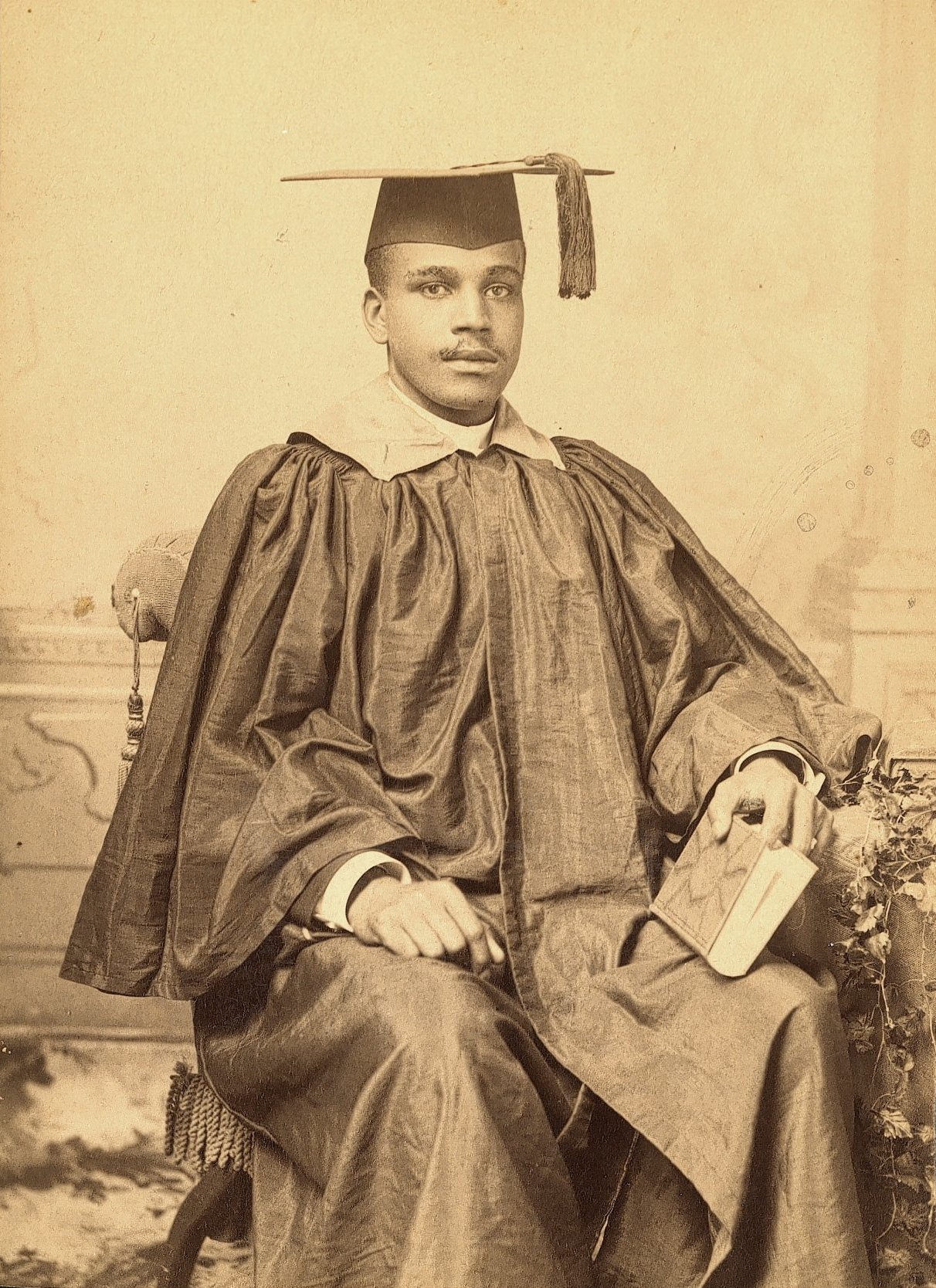 and niece, Sadie Tanner Mossell Alexander, Albert's daughter, who not only was first African American woman to graduate from Penn Law (in 1927) and be admitted to practice law in Pennsylvania, but prior to such noteworthy accomplishments was the first African American woman to earn a PhD in the United States (from Penn in 1922)). Sadie Tanner Mossell Alexander's uncle (via her mother's Tanner family), Lewis Baxter Moore, in 1896 became the first person of African descent to earn a doctorate at the University of Pennsylvania and only the fifth black person in the United States to earn a doctor of philosophy degree and in 1899 founded the Teachers College (now known as School of Education) of Howard University and served as its dean continuously from 1899 through September 1920.
Tosui Imadate was the first person of Asian descent to graduate from Penn (College Class of 1879). In 1877, Imadate became the first Asian member of a fraternity at Penn when he became a brother at Phi Kappa Psi. In a quote from a portion of a letter published in December 1880 issue of ''The Crescent'', Imadate is described by a Phi Kappa Psi brother as a "brother member of Penn's I [iota] chapter of Phi Kappa Psi Fraternity, who is a professor in college at Kiota [(Kyoto, Japan)]".
and niece, Sadie Tanner Mossell Alexander, Albert's daughter, who not only was first African American woman to graduate from Penn Law (in 1927) and be admitted to practice law in Pennsylvania, but prior to such noteworthy accomplishments was the first African American woman to earn a PhD in the United States (from Penn in 1922)). Sadie Tanner Mossell Alexander's uncle (via her mother's Tanner family), Lewis Baxter Moore, in 1896 became the first person of African descent to earn a doctorate at the University of Pennsylvania and only the fifth black person in the United States to earn a doctor of philosophy degree and in 1899 founded the Teachers College (now known as School of Education) of Howard University and served as its dean continuously from 1899 through September 1920.
Tosui Imadate was the first person of Asian descent to graduate from Penn (College Class of 1879). In 1877, Imadate became the first Asian member of a fraternity at Penn when he became a brother at Phi Kappa Psi. In a quote from a portion of a letter published in December 1880 issue of ''The Crescent'', Imadate is described by a Phi Kappa Psi brother as a "brother member of Penn's I [iota] chapter of Phi Kappa Psi Fraternity, who is a professor in college at Kiota [(Kyoto, Japan)]".
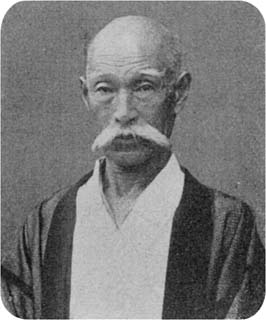 Fuji Tsukamoto (University of Pennsylvania School of Arts and Sciences, Penn Graduate School Class of 1889) became the first woman of Asian descent to matriculate at Penn when she started her study of biology and botany in 1885 and, like Tosui Imadate, also taught at Kyoto college in Japan.
Mary Alice Bennett, MD, PhD, and Anna H. Johnson were in 1880 the first women to enroll in a Penn degree-granting program and Bennett was the first woman to receive a degree from Penn, which was a PhD.
Fuji Tsukamoto (University of Pennsylvania School of Arts and Sciences, Penn Graduate School Class of 1889) became the first woman of Asian descent to matriculate at Penn when she started her study of biology and botany in 1885 and, like Tosui Imadate, also taught at Kyoto college in Japan.
Mary Alice Bennett, MD, PhD, and Anna H. Johnson were in 1880 the first women to enroll in a Penn degree-granting program and Bennett was the first woman to receive a degree from Penn, which was a PhD.
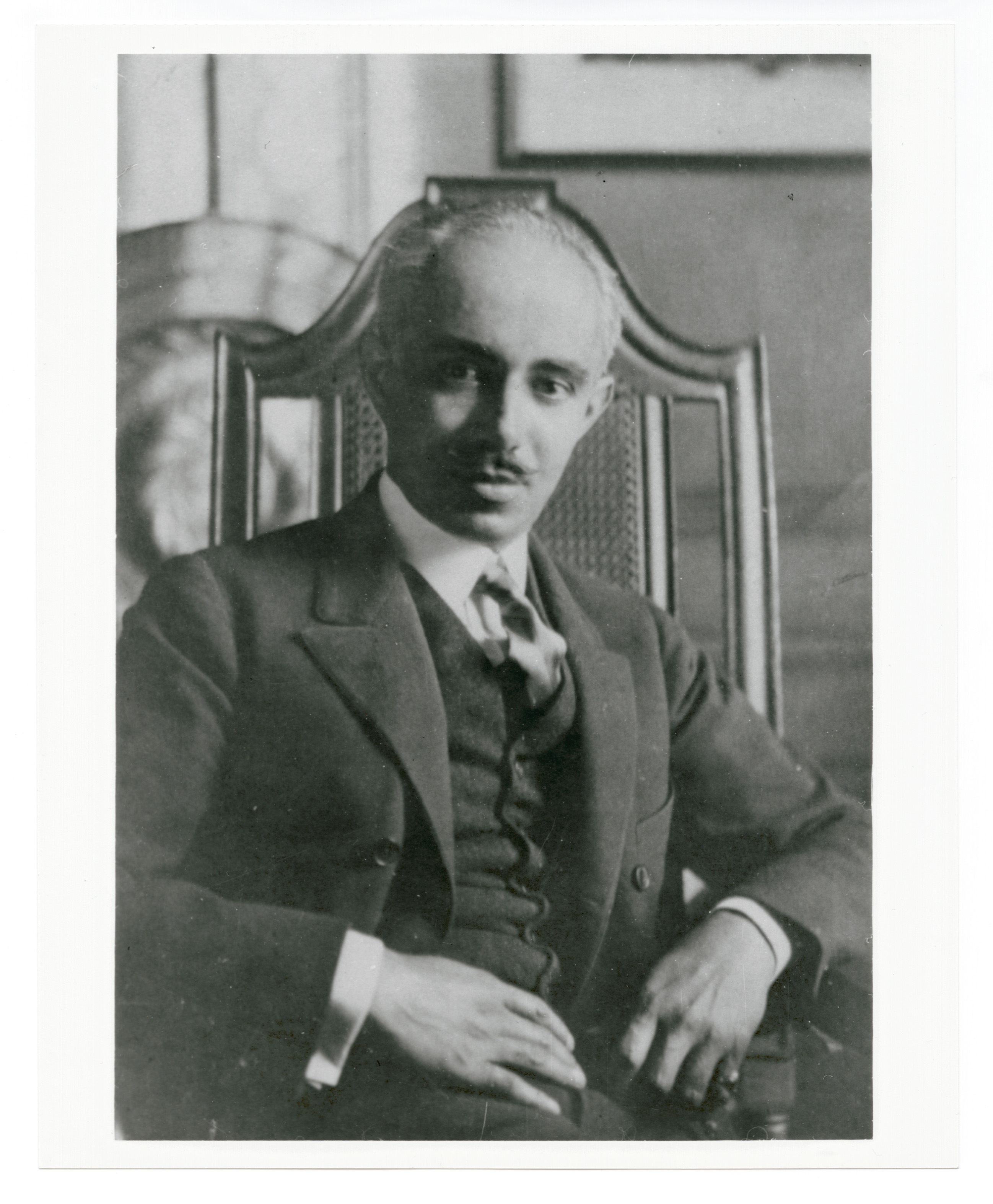 Julian Abele ("Willing and Able" to his fellow students) in 1902 was the first African American to graduate from University of Pennsylvania School of Design (then named Department of Architecture) and was elected as the president of Penn's Architectural Society. Abele won a 1901 student competition where he designed a Beaux Arts architecture, Beaux Arts pedestrian gateway that was built and still stands on the campus of Haverford College, The Edward B. Conklin Memorial Gate at the Railroad Avenue entrance to Haverford College. Abele contributed to the design of more than 400 buildings, including the Widener Memorial Library at Harvard University (1912–1915), Free Library of Philadelphia, Philadelphia's Parkway Central Library, Central Library (1917–1927), and the Philadelphia Museum of Art (1914–1928). and was the primary designer of the west campus of Duke University (1924–1954). Duke honored Abele by prominently displaying his portrait, the first portrait of an African American to be displayed on the campus.
Julian Abele ("Willing and Able" to his fellow students) in 1902 was the first African American to graduate from University of Pennsylvania School of Design (then named Department of Architecture) and was elected as the president of Penn's Architectural Society. Abele won a 1901 student competition where he designed a Beaux Arts architecture, Beaux Arts pedestrian gateway that was built and still stands on the campus of Haverford College, The Edward B. Conklin Memorial Gate at the Railroad Avenue entrance to Haverford College. Abele contributed to the design of more than 400 buildings, including the Widener Memorial Library at Harvard University (1912–1915), Free Library of Philadelphia, Philadelphia's Parkway Central Library, Central Library (1917–1927), and the Philadelphia Museum of Art (1914–1928). and was the primary designer of the west campus of Duke University (1924–1954). Duke honored Abele by prominently displaying his portrait, the first portrait of an African American to be displayed on the campus.
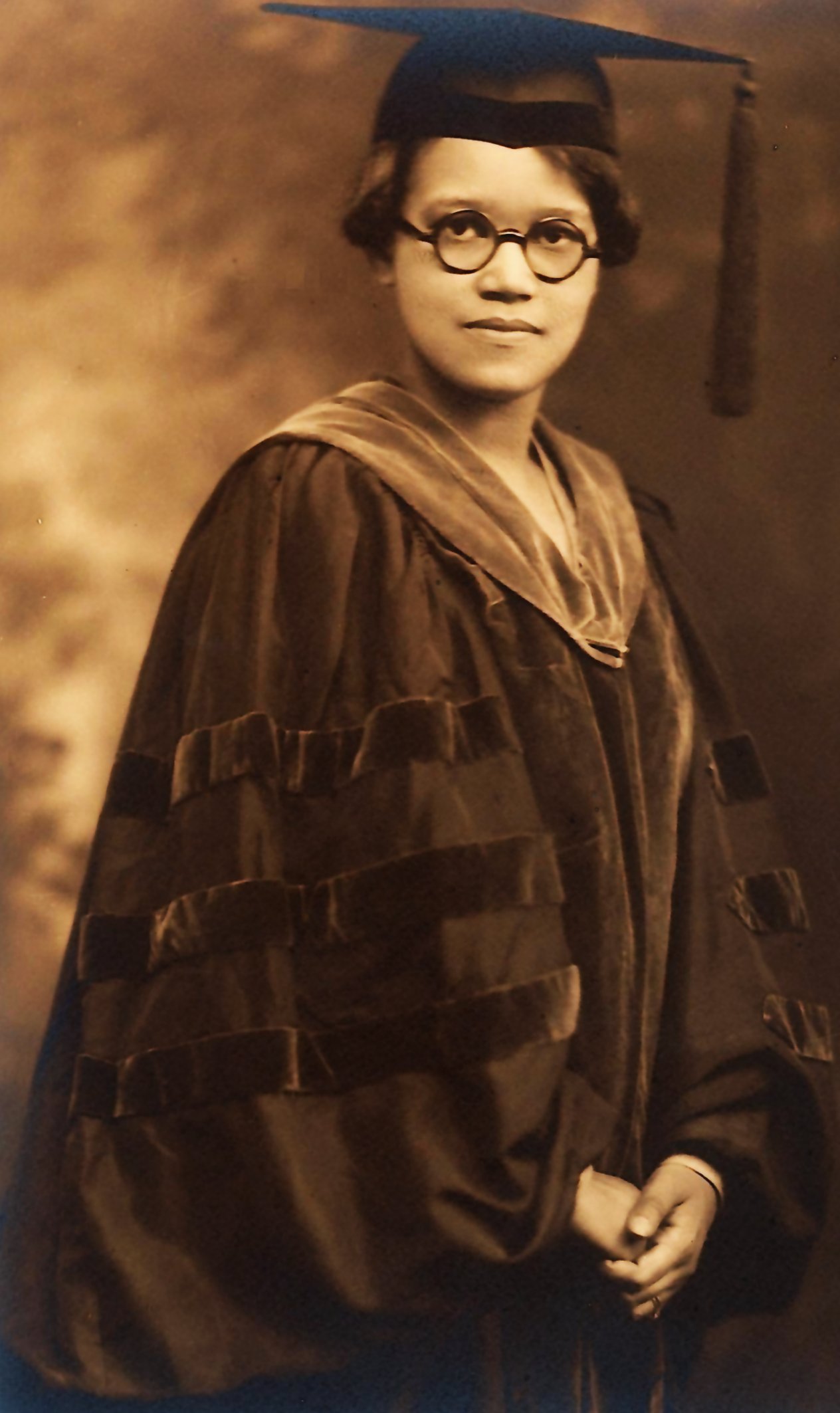 Sadie Tanner Mossell Alexander (paternal niece of Nathan Francis Mossell and maternal niece of Lewis Baxter Moore) was the first African American to receive a PhD in economics in the United States (and third black woman to earn one in the United States in any subject) and first from Penn in 1921, the first African-American woman to receive a law degree from Penn Law in 1927, and the first African-American woman to practice law in Pennsylvania.
Sadie Tanner Mossell Alexander (paternal niece of Nathan Francis Mossell and maternal niece of Lewis Baxter Moore) was the first African American to receive a PhD in economics in the United States (and third black woman to earn one in the United States in any subject) and first from Penn in 1921, the first African-American woman to receive a law degree from Penn Law in 1927, and the first African-American woman to practice law in Pennsylvania.
 Alan L. Hart, MD, who earned a master's degree at Penn Med in radiology (class of 1928), was born in 1890 and publicly identified as a female, Alberta Lucille Hart, through much of 1917, the year Dr. Hart transitioned to being a man by having a hysterectomy, one of the first in the United States to be performed to help a person become a trans man, and lived the rest of his life as a man. Dr. Hart, Penn's most prominent transgender alumnus in the first half of the twentieth century, was a pioneer in using x-ray photography to detect tuberculosis, allowing the identification of asymptomatic TB carriers (seventy-five percent of the total infected), permitting treatment of patients before they had complications, and allowing for separation of TB patients from others to stop the spread of one of the more infectious deadly diseases known to humanity.
The first openly LGBTQ+ organization funded by Penn was formed in 1972 by "Steve" Kiyoshi Kuromiya (a Benjamin Franklin scholar and Penn alumnus from college class of 1966) when he created the Gay Coffee Hour, which met every week on campus and was also open to non-students and served as an alternative space to gay bars for gay people of all ages. Penn funded the Gay Coffee House program (via a grant from the student government), which was held in Houston Hall at six o'clock in the evening every Wednesday and attracted, on average, roughly sixty people of all ages with roughly "one-quarter to one-third women and two-thirds to three-quarters men."
As detailed in part above, by the first decades of the twentieth century, Penn made strides and took an active interest in attracting diverse students from around the globe. Two examples of such action occurred in 1910. Penn's first director of publicity, created a recruiting brochure, translated into Spanish, with approximately 10,000 copies circulated throughout Latin America. That same year, the Penn-affiliated organization, the Cosmopolitan Club, started an annual tradition of hosting an opening "smoker", which attracted students from 40 nations who were formally welcomed to the university by then-vice provost Edgar Fahs Smith (who the following year would start a ten-year tenure as provost) who spoke about how Penn wanted to "bring together students of different countries and break down misunderstandings existing between them".
The success of such efforts were reported in 1921 when the official Penn publicity department reported that
Of those accepted for admission in 2018, 48 percent were Asian people, Asian, Hispanic, African-American or Native American. Fourteen percent of entering undergraduates in 2018 were international students. The composition of international first-year students in 2018 was: 46% from Asia; 15% from Africa and the Middle East; 16% from Europe; 14% from Canada and Mexico; 8% from the Caribbean, Central America and South America; 5% from Australia and the Pacific Islands. The acceptance rate for international students admission in 2018 was 493 out of 8,316 (6.7%). In 2018, 55% of all enrolled students were women.
In the last few decades, Jewish enrollment has been declining. Circa 1999 about 28% of the students were Jewish. In early 2020, 1,750 Penn undergraduate students were Jewish, which would be approximately 17% of the some 10,000 undergrads for 2019–20.
Alan L. Hart, MD, who earned a master's degree at Penn Med in radiology (class of 1928), was born in 1890 and publicly identified as a female, Alberta Lucille Hart, through much of 1917, the year Dr. Hart transitioned to being a man by having a hysterectomy, one of the first in the United States to be performed to help a person become a trans man, and lived the rest of his life as a man. Dr. Hart, Penn's most prominent transgender alumnus in the first half of the twentieth century, was a pioneer in using x-ray photography to detect tuberculosis, allowing the identification of asymptomatic TB carriers (seventy-five percent of the total infected), permitting treatment of patients before they had complications, and allowing for separation of TB patients from others to stop the spread of one of the more infectious deadly diseases known to humanity.
The first openly LGBTQ+ organization funded by Penn was formed in 1972 by "Steve" Kiyoshi Kuromiya (a Benjamin Franklin scholar and Penn alumnus from college class of 1966) when he created the Gay Coffee Hour, which met every week on campus and was also open to non-students and served as an alternative space to gay bars for gay people of all ages. Penn funded the Gay Coffee House program (via a grant from the student government), which was held in Houston Hall at six o'clock in the evening every Wednesday and attracted, on average, roughly sixty people of all ages with roughly "one-quarter to one-third women and two-thirds to three-quarters men."
As detailed in part above, by the first decades of the twentieth century, Penn made strides and took an active interest in attracting diverse students from around the globe. Two examples of such action occurred in 1910. Penn's first director of publicity, created a recruiting brochure, translated into Spanish, with approximately 10,000 copies circulated throughout Latin America. That same year, the Penn-affiliated organization, the Cosmopolitan Club, started an annual tradition of hosting an opening "smoker", which attracted students from 40 nations who were formally welcomed to the university by then-vice provost Edgar Fahs Smith (who the following year would start a ten-year tenure as provost) who spoke about how Penn wanted to "bring together students of different countries and break down misunderstandings existing between them".
The success of such efforts were reported in 1921 when the official Penn publicity department reported that
Of those accepted for admission in 2018, 48 percent were Asian people, Asian, Hispanic, African-American or Native American. Fourteen percent of entering undergraduates in 2018 were international students. The composition of international first-year students in 2018 was: 46% from Asia; 15% from Africa and the Middle East; 16% from Europe; 14% from Canada and Mexico; 8% from the Caribbean, Central America and South America; 5% from Australia and the Pacific Islands. The acceptance rate for international students admission in 2018 was 493 out of 8,316 (6.7%). In 2018, 55% of all enrolled students were women.
In the last few decades, Jewish enrollment has been declining. Circa 1999 about 28% of the students were Jewish. In early 2020, 1,750 Penn undergraduate students were Jewish, which would be approximately 17% of the some 10,000 undergrads for 2019–20.
Penn Face and behavioral health
The university's social pressure surrounding academic perfection, extreme competitiveness, and nonguaranteed readmission have created what is known as "Penn Face": students put on a façade of confidence and happiness while enduring mental turmoil. Stanford University calls this phenomenon "Duck Syndrome." In recent years, mental health has become an issue on campus with ten student suicides between the years of 2013 to 2016. The school responded by launching a task force. The most widely covered case of Penn Face has been Madison Holleran. In 2018, initiatives were enacted to ameliorate mental health problems, such as requiring sophomores to live on campus and the daily closing of Huntsman Hall at 2:00 a.m. The university's suicide rate was the catalyst for a 2018 state bill, introduced by Governor Tom Wolf, to raise Pennsylvania's standards for university suicide prevention. The university's efforts to address mental health on campus came into the national spotlight again in September 2019 when the director of the university's counseling services died by suicide six months after starting the position.Selected student organizations
;Oldest organization The Philomathean Society, founded in 1813, is one of the United States' oldest collegiate literary societies and continues to host lectures and intellectual events open to the public.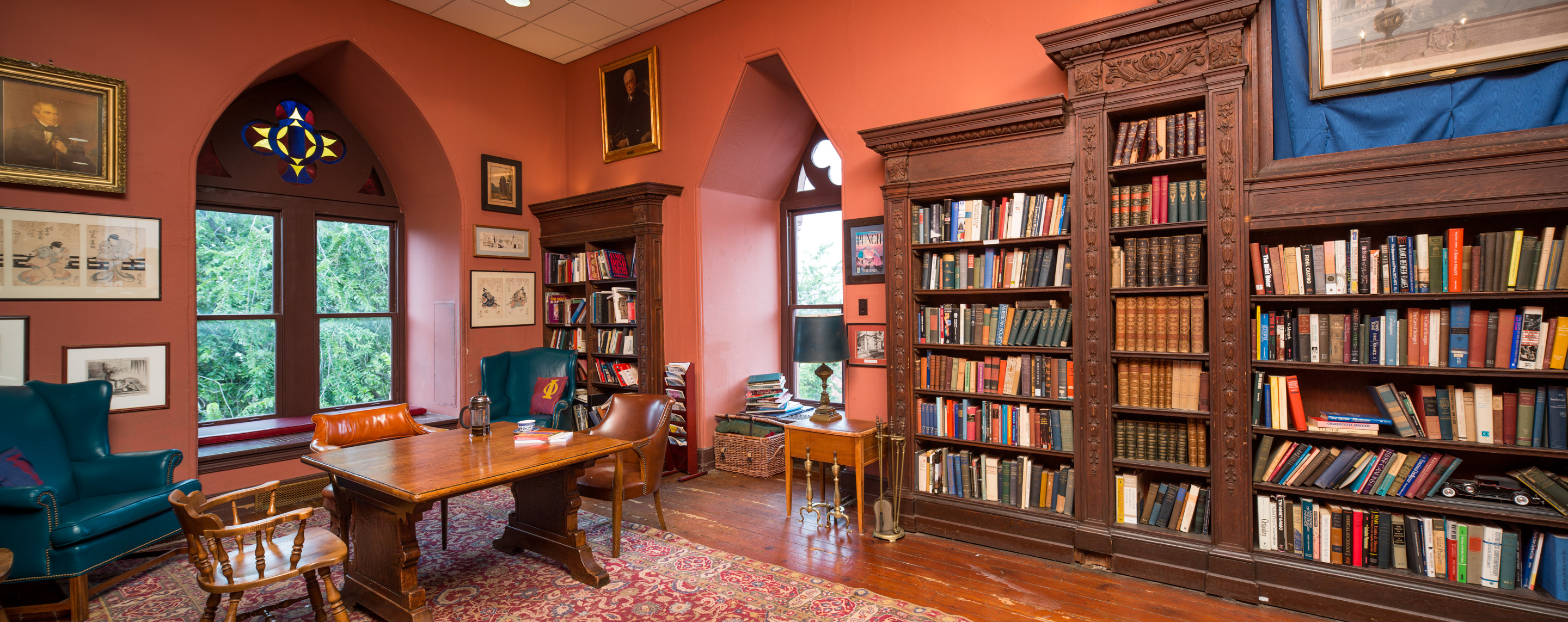 ;Self-funded organization
;''The Daily Pennsylvanian''
''The Daily Pennsylvanian'' is an independent, student-run newspaper, which has been published daily since it was founded in 1885. The newspaper went unpublished from May 1943 to November 1945 due to World War II. In 1984, the university lost all editorial and financial control of ''The Daily Pennsylvanian'' (also known as ''The DP'') when the newspaper became its own corporation. ''The Daily Pennsylvanian'' has won the Pacemaker Award administered by the Associated Collegiate Press multiple times, most recently in 2019. The ''DP'' also publishes a weekly arts and culture magazine called ''34th Street Magazine''.
;Self-funded organization
;''The Daily Pennsylvanian''
''The Daily Pennsylvanian'' is an independent, student-run newspaper, which has been published daily since it was founded in 1885. The newspaper went unpublished from May 1943 to November 1945 due to World War II. In 1984, the university lost all editorial and financial control of ''The Daily Pennsylvanian'' (also known as ''The DP'') when the newspaper became its own corporation. ''The Daily Pennsylvanian'' has won the Pacemaker Award administered by the Associated Collegiate Press multiple times, most recently in 2019. The ''DP'' also publishes a weekly arts and culture magazine called ''34th Street Magazine''.
Penn Electric Racing
 Penn Electric Racing
Penn Electric Racingis the university's Formula SAE International, SAE team that competes in the international Formula SAE, FSAE EV competition (Formula SAE International, Society of Automotive Engineers, Electric vehicle, Electric Vehicle). Colloquially known as "PER", the team designs, manufactures, and races custom Formula One car, Formula-style electric racecars against other collegiate teams. In 2015, PER built and raced their first racecar, REV1, at the List of Formula SAE winners, Lincoln Nebraska FSAE competition, winning first place. The team repeated their success with their next two racecars: REV2 won second place in 2016, and REV3 won first place in 2017.
Performing arts organizations
Penn is home to numerous organizations that promote the arts, from dance to spoken word, jazz to stand-up comedy, theatre, a cappella and more. The Performing Arts Council (PAC) oversees 45 student organizations in these areas. The PAC has four subcommittees: A Cappella Council; Dance Arts Council; Singer, Musicians, and Comedians (SMAC); and Theatre Arts Council (TAC-e).Penn Glee Club
Penn Band

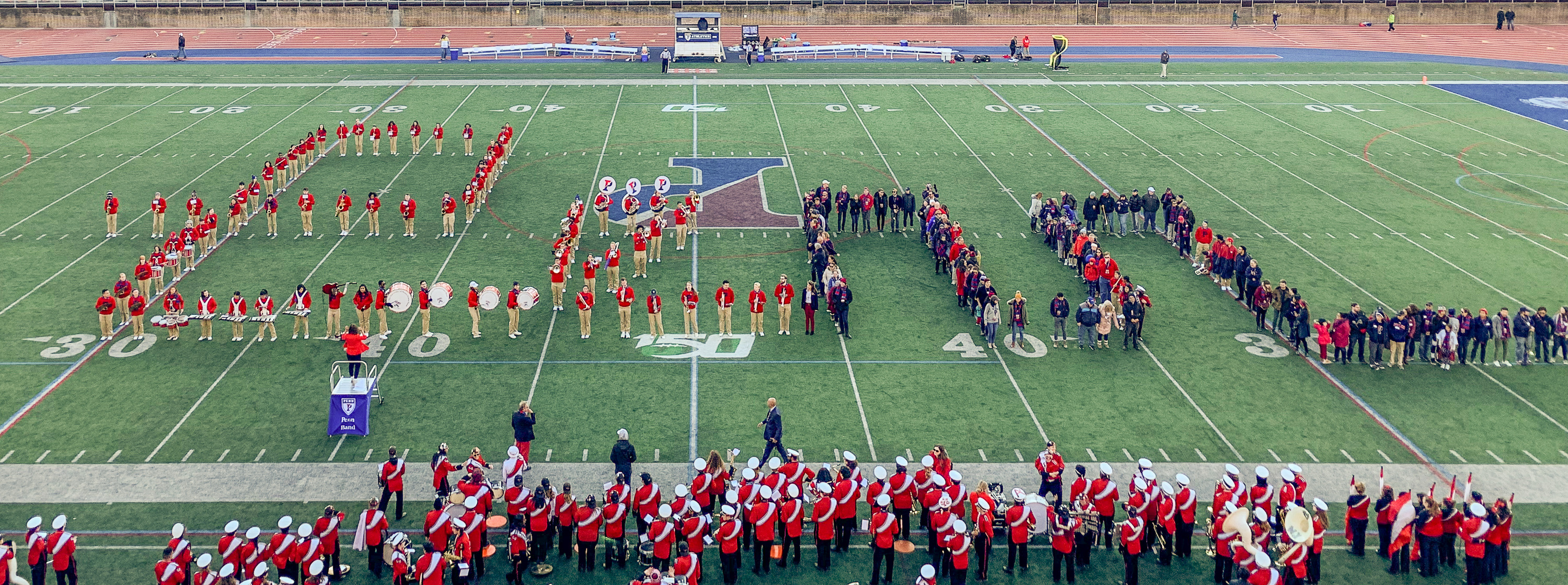 The University of Pennsylvania Band has been a part of student life since 1897. The Penn Band presently mainly performs at football and basketball games as well as university functions (e.g. Graduation, commencement and convocation) throughout the year but in past it was known not only as the first college band to perform at Macy's Thanksgiving Day Parade but performed with notable musicians, including John Philip Sousa, members of the Philadelphia Orchestra, the U.S. Marine Band ("The President's Own"), Doc Severinsen of The Tonight Show Starring Johnny Carson. Beginning in the late 1920s and 1930s Penn Band recorded with the Victor Talking Machine Company (RCA-Victor Company) and was nationally broadcast on WABC (AM). In 1977, Penn Band performed with Chuck Barris of The Gong Show and in 1980 opened for Penn Alumnus, Maury Povich in his eponymously named show.
Penn Band has performed for Princess Grace Kelly of Monaco (sister and aunt to number of alumni), alumnus and District Attorney and Mayor of Philadelphia, and Governor of Pennsylvania Ed Rendell, Vice President Al Gore, Presidents Theodore Roosevelt, Lyndon B. Johnson and Ronald Reagan, and Polish dissident and President Lech Wałęsa. By the 1970s, however, Penn Band had begun moving away from the traditional corps style and is now a scramble band. The first one hundred years of the organization's history was described in a book from Arcadia Publishing: ''Images of America:The University of Pennsylvania Band'' (2006).
The University of Pennsylvania Band has been a part of student life since 1897. The Penn Band presently mainly performs at football and basketball games as well as university functions (e.g. Graduation, commencement and convocation) throughout the year but in past it was known not only as the first college band to perform at Macy's Thanksgiving Day Parade but performed with notable musicians, including John Philip Sousa, members of the Philadelphia Orchestra, the U.S. Marine Band ("The President's Own"), Doc Severinsen of The Tonight Show Starring Johnny Carson. Beginning in the late 1920s and 1930s Penn Band recorded with the Victor Talking Machine Company (RCA-Victor Company) and was nationally broadcast on WABC (AM). In 1977, Penn Band performed with Chuck Barris of The Gong Show and in 1980 opened for Penn Alumnus, Maury Povich in his eponymously named show.
Penn Band has performed for Princess Grace Kelly of Monaco (sister and aunt to number of alumni), alumnus and District Attorney and Mayor of Philadelphia, and Governor of Pennsylvania Ed Rendell, Vice President Al Gore, Presidents Theodore Roosevelt, Lyndon B. Johnson and Ronald Reagan, and Polish dissident and President Lech Wałęsa. By the 1970s, however, Penn Band had begun moving away from the traditional corps style and is now a scramble band. The first one hundred years of the organization's history was described in a book from Arcadia Publishing: ''Images of America:The University of Pennsylvania Band'' (2006).
Penn's a cappella community
The A Cappella Council (ACK) is composed of 14 a cappella groups. Penn's a cappella groups entertain audiences with repertoires including pop, rock, R&B, jazz, Hindi, and Chinese songs. ACK is also home to Off The Beat, which has received the most contemporary a cappella recording awards of any collegiate group in the United States and the most features on the ''Best of College A Cappella'' albums. Penn Masala, formed in 1996, is world's oldest and premier South Asian a cappella group based in an American university, which has performed for Barack Obama, Henry Kissinger, Ban Ki Moon, Farooq Abdullah, Imran Khan, Rajkumar Hirani, A.R. Rahman, and Sunidhi Chauhan, had their a cappella version of Nazia Hassan's Urdu classic "Aap Jaisa Koi", (originally from the movie ''Qurbani (1980 film), Qurbani'') sung in the movie American Desi, and was invited by Penn alumni Elizabeth Banks (class of 1996) and Max Handelman (Banks' husband, class of 1995) to appear in ''Pitch Perfect 2'', as Banks reported that Penn's a capella community inspired the Pitch Perfect (film series), film series starring and/or produced by Banks and Handleman.Comedy organizations
 The Mask and Wig Club, founded in 1889, is the oldest all-male musical comedy troupe in the country. Bloomers comedy group, founded in 1978, was the "... nation's first collegiate all-women musical and sketch comedy troupe..." and now accepts all persons from under-represented gender identities who perform comedy.
The Mask and Wig Club, founded in 1889, is the oldest all-male musical comedy troupe in the country. Bloomers comedy group, founded in 1978, was the "... nation's first collegiate all-women musical and sketch comedy troupe..." and now accepts all persons from under-represented gender identities who perform comedy.
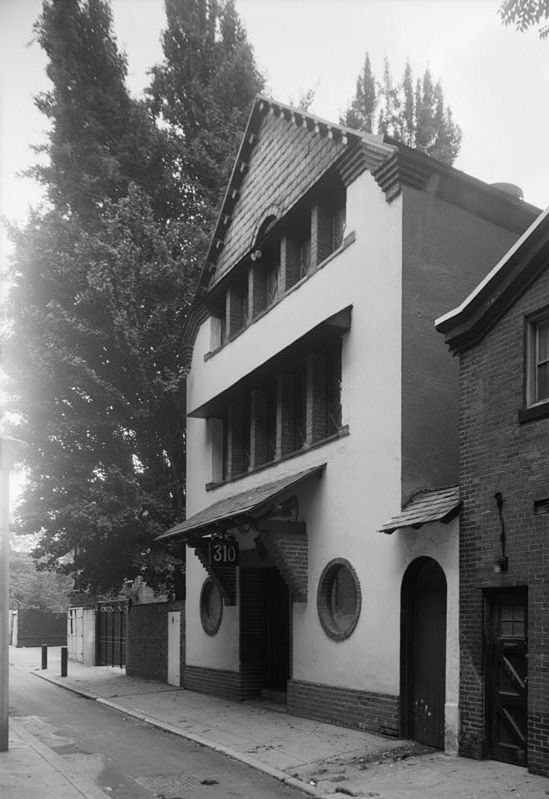
Religious and spiritual organizations
;Mainstream Protestantism Dating back to 1857, The Christian Association (a.k.a. The CA) is the oldest religious organization at the university and is composed primarily of students from Mainline Protestant backgrounds. When the university moved to its current campus in the 1880s the CA was based in Houston Hall. After moving around several times it relocated to building at 36th and Locust Streets, which it built and owned (now the ARCH Building), and occupied from 1928 until 2000. The CA ran several foreign missions including one of lasting import when in 1906 it financed University of Pennsylvania School of Medicine graduate, Josiah McCracken, MD, trip to China to investigate the viability of operating the medical department of the Canton Christian College (now known as Lingnan University (Guangzhou)). The following year, Dr. McCracken moved to China and renamed the department as "The University Medical School in Canton, China," and served as its president from the time of renaming through the date in 1913 when the CA ended its affiliation with the Canton Christian College. The CA also ran for decades a camp for socio-economically disadvantaged children from Philadelphia in a more rural section of Pennsylvania. At present the CA occupies part of the parsonage at Tabernacle United Church of Christ. ;Judaism Though Moses Levy, Penn's first Jewish student, enrolled in 1772 and was the first Jewish trustee (elected in 1802 and served through 1826), organized Jewish life did not begin in earnest until the start of 20th century. Jewish Life on campus is centered at Penn branch of Hillel International, which inspires students to explore Judaism, creates patterns of Jewish living that can be sustained after graduation, provides religious communities, promotes educational initiatives, social justice projects, social and cultural opportunities, and groups focusing on Israel education and politics, and hosts a Kosher Penn approved dining hall (supervised by the Community Kashrus of Greater Philadelphia). In addition Penn Hillel student and professional staff help facilitate the Rohr Jewish Learning Institute's Sinai Scholars Society Academic Symposium, a prestigious event that brings together Jewish college students with noted Jewish academics for a day of in-depth discussion and debate at the university. ;Roman Catholicism The Penn Newman Catholic Center (the Newman Center) was founded in 1893 (and was the first Newman Center in the country) with the mission of supporting students, faculty, and staff in their religious endeavors. The organization brings prominent Christian figures to campus, including Rev. Thomas "Tom" J. Hagan, Oblates of St. Francis de Sales, OSFS, who worked in the Newman Center and founded Haiti-based non-profit Hands Together; and, in September 2015, James Martin (priest, born 1960), James Martin Society of Jesus, SJ (Athletics
Penn's college athletics, sports teams are nicknamed the Religious Society of Friends, Quakers, but the teams are often also referred to as The Red and Blue as reflected in the popular song sung after every athletic contest where the Penn Band or other musical groups are present. The athletes participate in the Ivy League and Division I (NCAA), Division I (NCAA Division I Football Championship Subdivision, Division I FCS for football) in the National Collegiate Athletic Association, NCAA. In recent decades, they often have been sports league, league champions in football (14 times from 1982 to 2010) and basketball (22 times from 1970 to 2006). The first athletic team at Penn was the cricket team, which formed in 1842 and played regularly through 1846, the year it lost its "grounds", and then only played intermittently until 1864, the year it played its first intercollegiate game (against Haverford College). The rowing (or crew) team composed of Penn students but not officially representing Penn was formed in 1854 but did not compete against other colleges as official part of Penn until 1879. The rugby football team began to play against other colleges, most notably against College of New Jersey (18th Century), College of New Jersey (now Princeton University) in 1874 using a combination of association football (i.e. soccer) and Rugby football, rugby rules (the twenty players on each side were able to use their hands but were not able to pass or bat the ball forward).Cricket
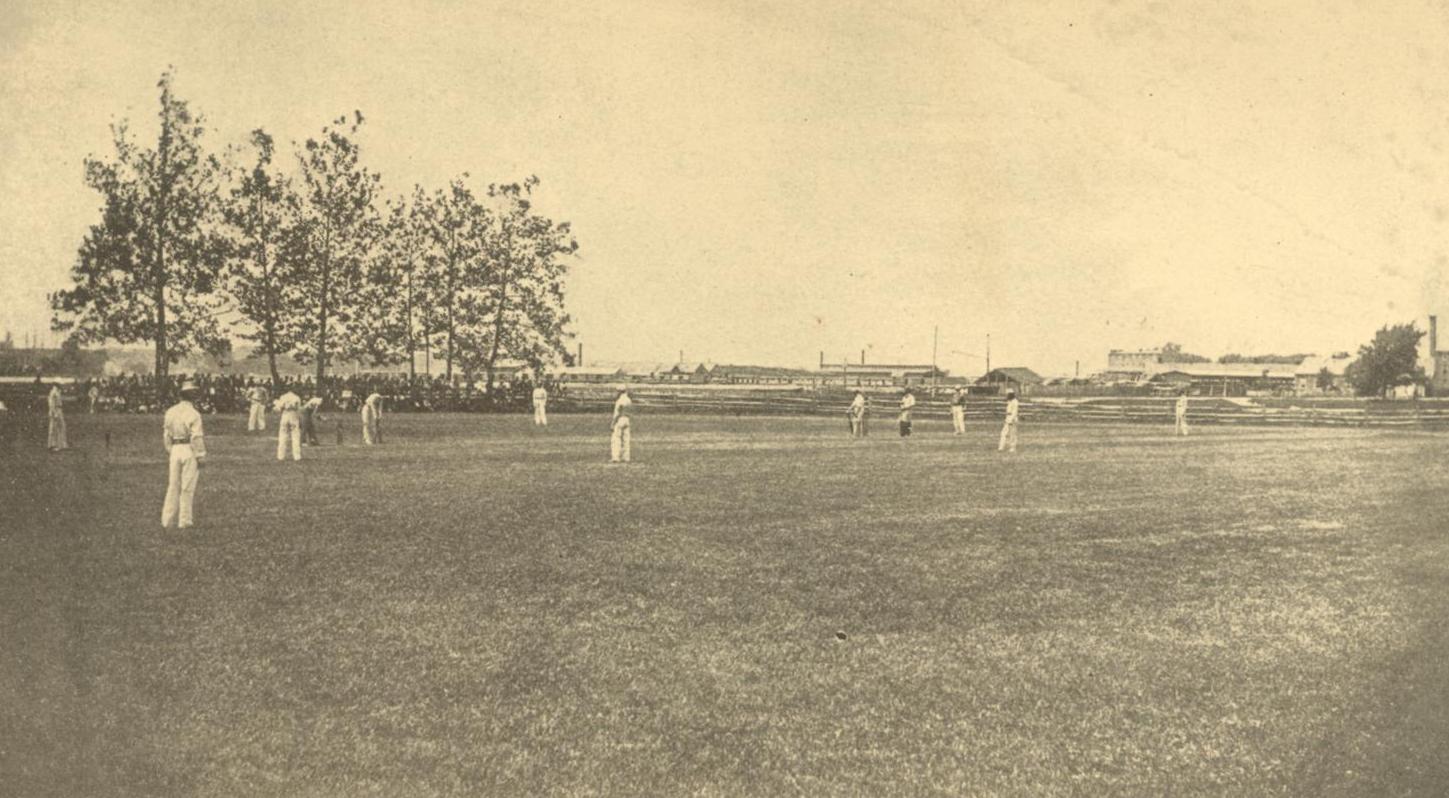 The first University of Pennsylvania cricket team (reported to be the first cricket team in the United States composed exclusively of Americans) was organized in 1842 by a member of Philadelphia's prominent :Wister family, Wister family, William Rotch Wister (class of 1846 for Bachelor of Arts and 1849 for Master of Arts). Penn never possessed its own "ground" except in 1846 when it leased one day a week, for a total sum of $50, a "ground" (located east of the Delaware River). From 1846 to 1860, there is little evidence of Penn playing cricket but just as Civil War began, Penn students resumed playing cricket matches between classes of Penn students.
On May 7, 1864, Penn played its first intercollegiate game against Haverford College and then proceeded to play Haverford for three consecutive years until 1869, when the Haverford faculty banned cricket away from their college grounds.
After Penn moved west of the Schuylkill River in 1872, Penn played cricket at one of the local clubs (Belmont Cricket Club, the closest to campus at 50th Street and Chester Avenue, Merion Cricket Club, and Germantown Cricket Club), or at Haverford College. Though there is evidence of an occasional game during period 1870 through 1875, none were played against other colleges and there were no yearbook pictures for the three years after 1872 when Penn moved from Center City to University City. Starting in 1875 and through 1880, Penn fielded a varsity eleven, which played a few matches each year against opponents that included Haverford College and Columbia College (New York), Columbia College.
In 1881, Penn, Harvard College, Haverford College, Princeton College (then known as College of New Jersey), and Columbia College formed The Intercollegiate sports team champions#Cricket, Intercollegiate Cricket Association, which Cornell University later joined. Penn won The Intercollegiate sports team champions#Cricket, Intercollegiate Cricket Association championship (the ''de facto'' national championship) 23 times (18 solo, 3 shared with Haverford and Harvard, 1 shared with Haverford and Cornell, and 1 shared with just Haverford) during the 44 years that The Intercollegiate Cricket Association existed (1881 through 1924).
In the 1890s Penn's cricket team frequently toured Canada and the British Isles. In July 1895 an international cricket match between Canada and the United States was played on the Manheim grounds in Germantown section of Philadelphia with six of the United States team being Penn student athletes and, in September of that year, past and then current members of Penn's varsity cricket team played past and then current members of the English cricket teams of Oxford and Cambridge resulting in Penn defeating the Oxford-Cambridge team by one hundred runs. This was not surprising as in the last two and a half decades of the 19th century and first decade of the 20th century, Philadelphia was the center of cricket in the United States
The first University of Pennsylvania cricket team (reported to be the first cricket team in the United States composed exclusively of Americans) was organized in 1842 by a member of Philadelphia's prominent :Wister family, Wister family, William Rotch Wister (class of 1846 for Bachelor of Arts and 1849 for Master of Arts). Penn never possessed its own "ground" except in 1846 when it leased one day a week, for a total sum of $50, a "ground" (located east of the Delaware River). From 1846 to 1860, there is little evidence of Penn playing cricket but just as Civil War began, Penn students resumed playing cricket matches between classes of Penn students.
On May 7, 1864, Penn played its first intercollegiate game against Haverford College and then proceeded to play Haverford for three consecutive years until 1869, when the Haverford faculty banned cricket away from their college grounds.
After Penn moved west of the Schuylkill River in 1872, Penn played cricket at one of the local clubs (Belmont Cricket Club, the closest to campus at 50th Street and Chester Avenue, Merion Cricket Club, and Germantown Cricket Club), or at Haverford College. Though there is evidence of an occasional game during period 1870 through 1875, none were played against other colleges and there were no yearbook pictures for the three years after 1872 when Penn moved from Center City to University City. Starting in 1875 and through 1880, Penn fielded a varsity eleven, which played a few matches each year against opponents that included Haverford College and Columbia College (New York), Columbia College.
In 1881, Penn, Harvard College, Haverford College, Princeton College (then known as College of New Jersey), and Columbia College formed The Intercollegiate sports team champions#Cricket, Intercollegiate Cricket Association, which Cornell University later joined. Penn won The Intercollegiate sports team champions#Cricket, Intercollegiate Cricket Association championship (the ''de facto'' national championship) 23 times (18 solo, 3 shared with Haverford and Harvard, 1 shared with Haverford and Cornell, and 1 shared with just Haverford) during the 44 years that The Intercollegiate Cricket Association existed (1881 through 1924).
In the 1890s Penn's cricket team frequently toured Canada and the British Isles. In July 1895 an international cricket match between Canada and the United States was played on the Manheim grounds in Germantown section of Philadelphia with six of the United States team being Penn student athletes and, in September of that year, past and then current members of Penn's varsity cricket team played past and then current members of the English cricket teams of Oxford and Cambridge resulting in Penn defeating the Oxford-Cambridge team by one hundred runs. This was not surprising as in the last two and a half decades of the 19th century and first decade of the 20th century, Philadelphia was the center of cricket in the United States
 Cricket had gained in popularity among the upper class from their travels abroad and cricket clubs sprung up all across the Eastern Seaboard (even today Philadelphia still has three cricket clubs: the Philadelphia Cricket Club, the Merion Cricket Club and the Germantown Cricket Club).
Perhaps the university's most famous cricket player was George Patterson (cricketer), George Patterson (class of 1888), who still holds the North American batting record and who went on to play for the professional Philadelphia Cricket Team.
Following the First World War, cricket began to experience a serious decline (as baseball became the preferred sport of the warmer months and Imperial Cricket Conference, Cricket's "... international governing body and forerunner to the current International Cricket Conference (ICC), introduced a regulation making it clear that only countries within the British empire were welcome to compete") such that in 1924 Penn fielded its last team in the twentieth century. Starting in 2009, however, Penn once again fielded a cricket team, albeit club, that ended up being the first winner of a tournament for teams from the Ivies.
Cricket had gained in popularity among the upper class from their travels abroad and cricket clubs sprung up all across the Eastern Seaboard (even today Philadelphia still has three cricket clubs: the Philadelphia Cricket Club, the Merion Cricket Club and the Germantown Cricket Club).
Perhaps the university's most famous cricket player was George Patterson (cricketer), George Patterson (class of 1888), who still holds the North American batting record and who went on to play for the professional Philadelphia Cricket Team.
Following the First World War, cricket began to experience a serious decline (as baseball became the preferred sport of the warmer months and Imperial Cricket Conference, Cricket's "... international governing body and forerunner to the current International Cricket Conference (ICC), introduced a regulation making it clear that only countries within the British empire were welcome to compete") such that in 1924 Penn fielded its last team in the twentieth century. Starting in 2009, however, Penn once again fielded a cricket team, albeit club, that ended up being the first winner of a tournament for teams from the Ivies.
Rowing

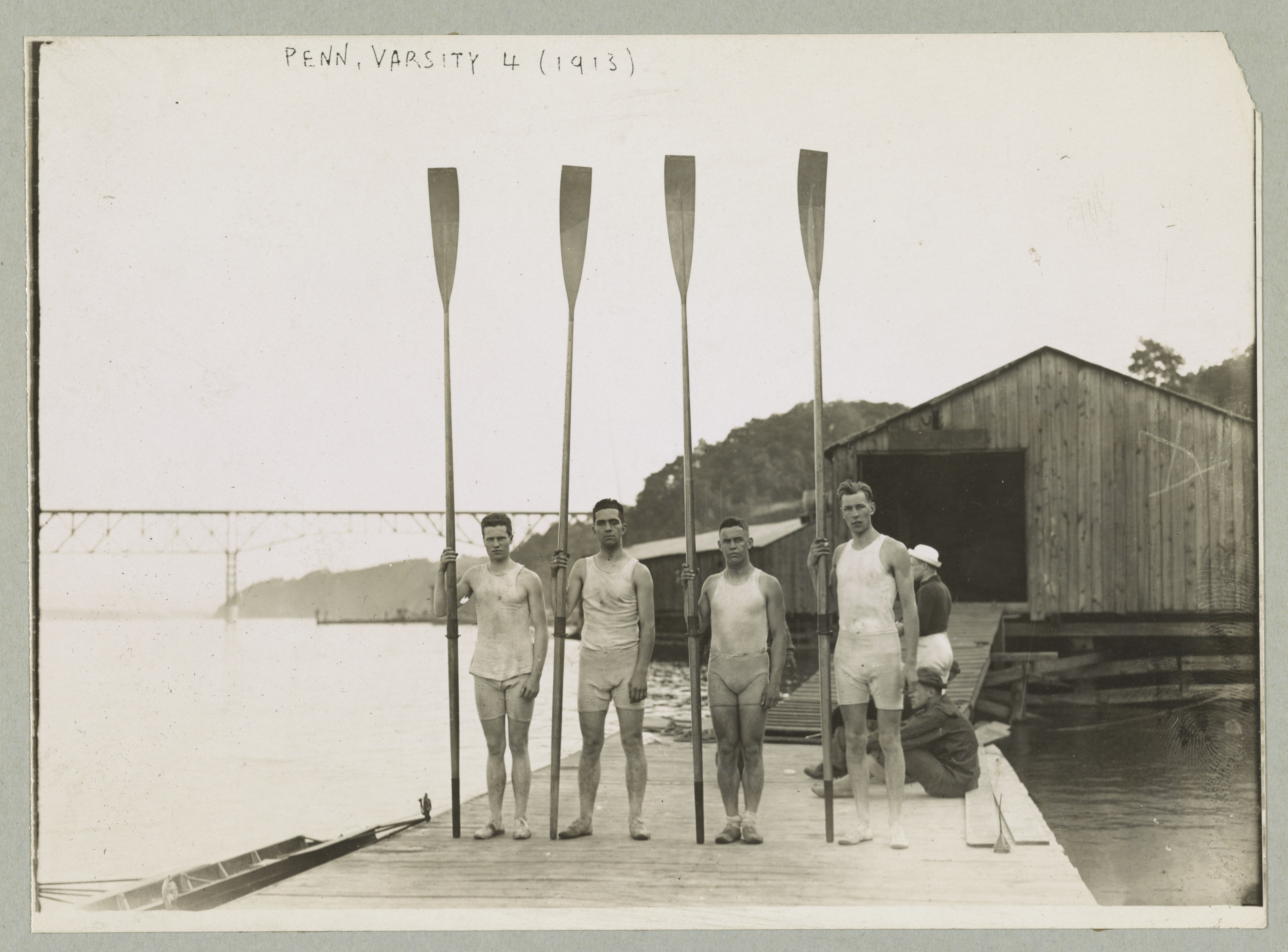 Rowing (sport), Rowing (crew) at Penn dates back to at least 1854 with the founding of the University Barge Club. The university currently hosts both heavyweight and lightweight men's teams and an open weight women's team, all of which compete as part of the Eastern Sprints League. Ellis Ward was Penn's first intercollegiate crew coach from 1879 through 1912. During the course of Ward's coaching career at Penn his "... Red and Blue crews won 65 races, in about 150 starts." Importantly, Ward coached Penn's 8-oared boat to the finals of the Grand Challenge Cup (the oldest and most prized trophy) at the Henley Royal Regatta (but in that final race was defeated by the champion Leander Club).
Rowing (sport), Rowing (crew) at Penn dates back to at least 1854 with the founding of the University Barge Club. The university currently hosts both heavyweight and lightweight men's teams and an open weight women's team, all of which compete as part of the Eastern Sprints League. Ellis Ward was Penn's first intercollegiate crew coach from 1879 through 1912. During the course of Ward's coaching career at Penn his "... Red and Blue crews won 65 races, in about 150 starts." Importantly, Ward coached Penn's 8-oared boat to the finals of the Grand Challenge Cup (the oldest and most prized trophy) at the Henley Royal Regatta (but in that final race was defeated by the champion Leander Club).
 Penn Rowing has produced a long list of famous coaches and Olympians. Members of Penn crew team, rowers Sidney Jellinek, Eddie Mitchell, and coxswain, John G. Kennedy, won the bronze medal for the United States at 1924 Olympics.
Penn Rowing has produced a long list of famous coaches and Olympians. Members of Penn crew team, rowers Sidney Jellinek, Eddie Mitchell, and coxswain, John G. Kennedy, won the bronze medal for the United States at 1924 Olympics.
 Joe Burk (class of 1935) was captain of Penn crew team, winner of the Henley Diamond Sculls twice, named recipient of the James E. Sullivan Award for nation's best amateur athlete in 1939, and Penn coach from 1950 to 1969. The 1955 Men's Heavyweight 8, coached by Joe Burk, became one of only four American university crews in history to win the Grand Challenge Cup at the Henley Royal Regatta. The outbreak of World War Two canceled the 1940 Olympics for which Burk was favored to win the gold medal.
Other Penn Olympic athletes and or Penn coaches of such athletes include:
(a) John Pescatore, John Anthony Pescatore (who competed in the 1988 Summer Olympics, 1988 Seoul Olympic Games for the United States as stroke of the men's coxed eight which earned a bronze medal and later competed at the 1992 Summer Olympics, 1992 Barcelona Olympic Games in the men's coxless pair),
(b) Susan Francia (winner of gold medals as part of the women's 8 oared boat at 2008 Olympics and 2012 Olympics),
(c) Regina Salmons (member of 2021 USA team),
(d) Rusty Callow,
(e) Harry Parker (rower), Harry Parker,
(f) Ted Nash (rower), Ted Nash, and
(g) John B. Kelly Jr., son of John B. Kelly Sr. (winner of three medals at 1920 Summer Olympics) and brother of Princess Grace of Monaco, was the second Penn Crew alumnus to win the James E. Sullivan Award for being nation's best amateur athlete (in 1947), who was winner of a bronze medal at the 1956 Summer Olympics).
The Penn men's crew team won the National Collegiate Rowing Championship in 1991. A member of that team, Janusz Hooker (Wharton School of Business, Wharton class of 1992) won the bronze medal in Men's Quadruple Sculls for Australia at the 1996 Summer Olympics. The Penn teams presently row out of College Boat Club, No.11 Boathouse Row.
Joe Burk (class of 1935) was captain of Penn crew team, winner of the Henley Diamond Sculls twice, named recipient of the James E. Sullivan Award for nation's best amateur athlete in 1939, and Penn coach from 1950 to 1969. The 1955 Men's Heavyweight 8, coached by Joe Burk, became one of only four American university crews in history to win the Grand Challenge Cup at the Henley Royal Regatta. The outbreak of World War Two canceled the 1940 Olympics for which Burk was favored to win the gold medal.
Other Penn Olympic athletes and or Penn coaches of such athletes include:
(a) John Pescatore, John Anthony Pescatore (who competed in the 1988 Summer Olympics, 1988 Seoul Olympic Games for the United States as stroke of the men's coxed eight which earned a bronze medal and later competed at the 1992 Summer Olympics, 1992 Barcelona Olympic Games in the men's coxless pair),
(b) Susan Francia (winner of gold medals as part of the women's 8 oared boat at 2008 Olympics and 2012 Olympics),
(c) Regina Salmons (member of 2021 USA team),
(d) Rusty Callow,
(e) Harry Parker (rower), Harry Parker,
(f) Ted Nash (rower), Ted Nash, and
(g) John B. Kelly Jr., son of John B. Kelly Sr. (winner of three medals at 1920 Summer Olympics) and brother of Princess Grace of Monaco, was the second Penn Crew alumnus to win the James E. Sullivan Award for being nation's best amateur athlete (in 1947), who was winner of a bronze medal at the 1956 Summer Olympics).
The Penn men's crew team won the National Collegiate Rowing Championship in 1991. A member of that team, Janusz Hooker (Wharton School of Business, Wharton class of 1992) won the bronze medal in Men's Quadruple Sculls for Australia at the 1996 Summer Olympics. The Penn teams presently row out of College Boat Club, No.11 Boathouse Row.
Rugby
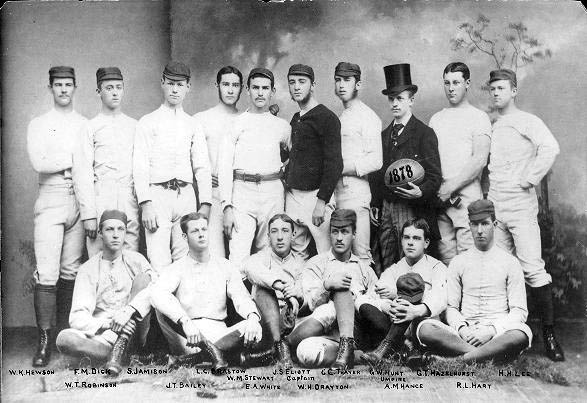 The Penn men's rugby football team is one of the oldest collegiate rugby teams in the United States. Indeed, Penn first fielded a team in mid 1870s playing by rules much closer to the rugby union and Association Football code rules (relative to American football rules, as such American football rules had not yet been invented). Among its earliest games was a game against College of New Jersey (18th Century), College of New Jersey (which in 1895 changed its name to Princeton University, Princeton) played in Philadelphia on Saturday, November 11, 1876, which was less than two weeks before Princeton met on November 23, 1876, with
The Penn men's rugby football team is one of the oldest collegiate rugby teams in the United States. Indeed, Penn first fielded a team in mid 1870s playing by rules much closer to the rugby union and Association Football code rules (relative to American football rules, as such American football rules had not yet been invented). Among its earliest games was a game against College of New Jersey (18th Century), College of New Jersey (which in 1895 changed its name to Princeton University, Princeton) played in Philadelphia on Saturday, November 11, 1876, which was less than two weeks before Princeton met on November 23, 1876, with 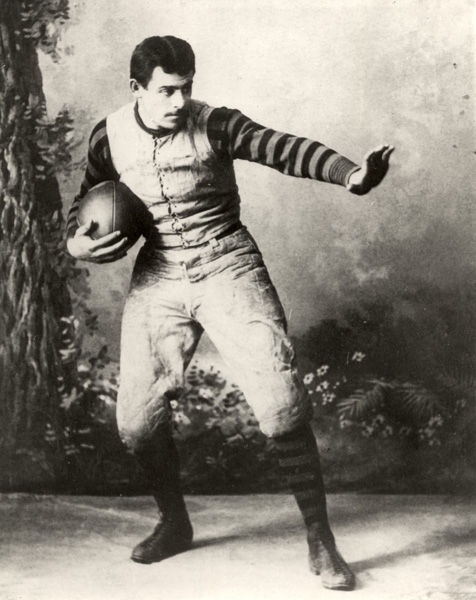 Heisman was instrumental in the first decade of the 20th century in changing the rules to more closely relate to the present rules of American football. One of Heisman's teammates (who was unanimously voted Captain in the fall after Heisman graduated) was Harry Arista Mackey, Penn Law class of 1893 (who subsequently served as List of mayors of Philadelphia, Mayor of Philadelphia from 1928 to 1932).
In 1906, Rugby per Rugby Union code was reintroduced to Penn (as Penn last played per Rugby Union Code in 1882 as Penn played rugby per a number of different rugby football rulebooks and codes from 1883 through 1890s) by Frank Villeneuve Nicholson (Frank Nicholson (rugby union)) University of Pennsylvania School of Dental Medicine (class of 1910), who in 1904 had captained the Australian national rugby team in its match against England.
Heisman was instrumental in the first decade of the 20th century in changing the rules to more closely relate to the present rules of American football. One of Heisman's teammates (who was unanimously voted Captain in the fall after Heisman graduated) was Harry Arista Mackey, Penn Law class of 1893 (who subsequently served as List of mayors of Philadelphia, Mayor of Philadelphia from 1928 to 1932).
In 1906, Rugby per Rugby Union code was reintroduced to Penn (as Penn last played per Rugby Union Code in 1882 as Penn played rugby per a number of different rugby football rulebooks and codes from 1883 through 1890s) by Frank Villeneuve Nicholson (Frank Nicholson (rugby union)) University of Pennsylvania School of Dental Medicine (class of 1910), who in 1904 had captained the Australian national rugby team in its match against England.
 Penn played per rugby union code rules at least through 1912, contemporaneously with Penn playing American gridiron football. Evidence of such may be found in an October 22, 1910, ''Daily Pennsylvanian'' article (quoted below) and a yearbook photo that rugby per rugby union code was played.
Penn played per rugby union code rules at least through 1912, contemporaneously with Penn playing American gridiron football. Evidence of such may be found in an October 22, 1910, ''Daily Pennsylvanian'' article (quoted below) and a yearbook photo that rugby per rugby union code was played.
 The player-coach of United States Olympic gold-winning rugby team at the 1924 Summer Olympics was Alan Valentine, who played rugby while at Penn (which he attended during 1921/1922 academic year) as he was getting a master's degree at Wharton.
Though Penn played rugby per rugby union rules from 1929 through 1934, there is no indication that Penn had a rugby team from 1935 through 1959 when Penn men's rugby became permanent due to leadership of Harry "Joe" Edwin Reagan III Penn's College class of 1962 and Penn Law class of 1965, who also went onto help create and incorporate (in 1975) and was Treasurer (in 1981) of USA Rugby and Oreste P. "Rusty" D'Arconte Penn's College class of 1966 Thus, with D'Arconte's hustle and Reagan's charisma and organizational skills, a team, which had fielded a side of fifteen intermittently from 1912 through 1960, became permanent.
In spring of 1984 Penn women's rugby, led by Social Chair Tamara Wayland (College class of 1985 who subsequently became the women's representative to and vice president of USA Rugby South from 1996 to 1998), Club President Marianne Seligson, and Penn Law student Gigi Sohn, began to compete. Penn women's rugby team is coached, as of 2020, by (a) Adam Dick, a 300-level certified coach with over 15 years of rugby coaching experience including being the first coach of the first women's rugby team at the University of Arizona and who was a four-year starter at University of Arizona men's first XV rugby team and (b) Philly women's player Kate Hallinan.
Penn's men's rugby team plays in the Ivy Rugby Conference and have finished as runners-up in both 15s and 7s in the Conference and won the Ivy Rugby Tournament in 1992. , the club uses the state-of-the-art facilities at Penn Park. The Penn Quakers' rugby team played on national TV at the 2013 Collegiate Rugby Championship, a college rugby tournament that for number of years had been played each June at PPL Park (now known as Subaru Park) in Philadelphia and was broadcast live on NBC. In their inaugural year of participation, the Penn men's rugby team won the Shield Competition, beating local Philadelphia Big 5, Big Five rival, Temple University, 17–12 in the final. In the semifinal match of that Shield Competition, Penn Rugby became the first Philadelphia team to beat a non-Philadelphia team in CRC history, with a 14–12 win over the University of Texas.
Penn men's rugby, as of 2020, is coached by Tiger Bax, a former professional rugby player hailing from Cape Town, South Africa, whose playing experience includes stints in the Super Rugby competition with the Stormers (15s) and Mighty Mohicans (7s), as well as with the Gallagher Premiership Rugby side, Saracens F.C., Saracens and whose coaching experience includes three successful years as coach at Valley Rugby Football Club in Hong Kong; and Tyler May, from Cherry Hill, New Jersey, who played rugby at Pennsylvania State University where he was a first XV player for three years.
Players on the 2019 men's team came from 11 countries: Australia, Botswana, Chile, Great Britain, Malaysia, Netherlands, New Zealand, China, Taiwan, South Africa, and the United States).
Penn's graduate and professional schools also fielded rugby teams. The Penn Law Rugby team (1985 through 1993) counts among its alumni Walter Joseph Jay Clayton (attorney), Jay Clayton, III Penn Law class of 1993, and chair of the U.S. Securities and Exchange Commission from May 4, 2017, until December 23, 2020, and Raymond Hulser, former Chief of Public Integrity Section of United States Department of Justice. The Wharton rugby team has competed from 1978 to the present. Other recent Penn Rugby Alumni include Conor Lamb (Penn College class of 2006 and Penn Law class of 2009), who played for undergraduate team (and had an additional year of eligibility allowing him to continue to playing for undergraduate team while a student at Penn Law per USA Rugby rules), and, as of 2021, is a member of United States House of Representatives, elected originally to Pennsylvania's 18th congressional district, since 2019 is a United States House of Representatives, U.S. Representative from Pennsylvania's 17th congressional district.
The player-coach of United States Olympic gold-winning rugby team at the 1924 Summer Olympics was Alan Valentine, who played rugby while at Penn (which he attended during 1921/1922 academic year) as he was getting a master's degree at Wharton.
Though Penn played rugby per rugby union rules from 1929 through 1934, there is no indication that Penn had a rugby team from 1935 through 1959 when Penn men's rugby became permanent due to leadership of Harry "Joe" Edwin Reagan III Penn's College class of 1962 and Penn Law class of 1965, who also went onto help create and incorporate (in 1975) and was Treasurer (in 1981) of USA Rugby and Oreste P. "Rusty" D'Arconte Penn's College class of 1966 Thus, with D'Arconte's hustle and Reagan's charisma and organizational skills, a team, which had fielded a side of fifteen intermittently from 1912 through 1960, became permanent.
In spring of 1984 Penn women's rugby, led by Social Chair Tamara Wayland (College class of 1985 who subsequently became the women's representative to and vice president of USA Rugby South from 1996 to 1998), Club President Marianne Seligson, and Penn Law student Gigi Sohn, began to compete. Penn women's rugby team is coached, as of 2020, by (a) Adam Dick, a 300-level certified coach with over 15 years of rugby coaching experience including being the first coach of the first women's rugby team at the University of Arizona and who was a four-year starter at University of Arizona men's first XV rugby team and (b) Philly women's player Kate Hallinan.
Penn's men's rugby team plays in the Ivy Rugby Conference and have finished as runners-up in both 15s and 7s in the Conference and won the Ivy Rugby Tournament in 1992. , the club uses the state-of-the-art facilities at Penn Park. The Penn Quakers' rugby team played on national TV at the 2013 Collegiate Rugby Championship, a college rugby tournament that for number of years had been played each June at PPL Park (now known as Subaru Park) in Philadelphia and was broadcast live on NBC. In their inaugural year of participation, the Penn men's rugby team won the Shield Competition, beating local Philadelphia Big 5, Big Five rival, Temple University, 17–12 in the final. In the semifinal match of that Shield Competition, Penn Rugby became the first Philadelphia team to beat a non-Philadelphia team in CRC history, with a 14–12 win over the University of Texas.
Penn men's rugby, as of 2020, is coached by Tiger Bax, a former professional rugby player hailing from Cape Town, South Africa, whose playing experience includes stints in the Super Rugby competition with the Stormers (15s) and Mighty Mohicans (7s), as well as with the Gallagher Premiership Rugby side, Saracens F.C., Saracens and whose coaching experience includes three successful years as coach at Valley Rugby Football Club in Hong Kong; and Tyler May, from Cherry Hill, New Jersey, who played rugby at Pennsylvania State University where he was a first XV player for three years.
Players on the 2019 men's team came from 11 countries: Australia, Botswana, Chile, Great Britain, Malaysia, Netherlands, New Zealand, China, Taiwan, South Africa, and the United States).
Penn's graduate and professional schools also fielded rugby teams. The Penn Law Rugby team (1985 through 1993) counts among its alumni Walter Joseph Jay Clayton (attorney), Jay Clayton, III Penn Law class of 1993, and chair of the U.S. Securities and Exchange Commission from May 4, 2017, until December 23, 2020, and Raymond Hulser, former Chief of Public Integrity Section of United States Department of Justice. The Wharton rugby team has competed from 1978 to the present. Other recent Penn Rugby Alumni include Conor Lamb (Penn College class of 2006 and Penn Law class of 2009), who played for undergraduate team (and had an additional year of eligibility allowing him to continue to playing for undergraduate team while a student at Penn Law per USA Rugby rules), and, as of 2021, is a member of United States House of Representatives, elected originally to Pennsylvania's 18th congressional district, since 2019 is a United States House of Representatives, U.S. Representative from Pennsylvania's 17th congressional district.
Football
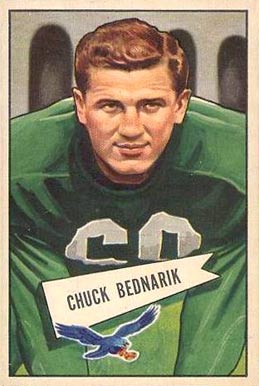 Penn first fielded a football team against Princeton at the Germantown Cricket Club in Philadelphia on November 11, 1876.
Penn football made many contributions to the sport in its early days. During the 1890s, Penn's famed coach and alumnus George Washington Woodruff introduced the quarterback kick, a forerunner of the forward pass, as well as the Placekicker, place-kick from scrimmage and the delayed pass. In 1894, 1895, 1897 and 1904, Penn was generally regarded as the national champion of collegiate football. Among the key players on the teams from 1897 to 1900 was Truxton Hare, Sr. who was selected as a charter member of the College Football Hall of Fame in 1951. While primarily a Guard (American football), guard, he also ran, Punt (gridiron football), punted, kicked off, and drop-kicked conversion (gridiron football), extra points.
The achievements of two of Penn's other outstanding players from that era, John Heisman, a Law School alumnus, and John Outland, a Penn Med alumnus, are remembered each year with the presentation of the Heisman Trophy to the most outstanding college football player of the year, and the Outland Trophy to the most outstanding college football Lineman (gridiron football), interior lineman of the year.
Also, each year the Bednarik Award is given to college football's best defensive player. Chuck Bednarik (class of 1949) was a three-time All-American Center (American football), center/linebacker who starred on the 1947 team and is generally regarded as Penn's all-time finest. In addition to Bednarik, the 1947 squad boasted four-time All-American Offensive tackle, tackle George Savitsky and three-time All-American Halfback (American football), halfback Skip Minisi. All three standouts were subsequently elected to the College Football Hall of Fame, as was their coach, George Munger (American football), George Munger (a star running back at Penn in the early 1930s). Bednarik went on to play for 12 years with the Philadelphia Eagles, and was elected to the Pro Football Hall of Fame in 1969.
Penn's game against University of California at Berkeley on September 29, 1951 (in front of a crowd of 60,000 at Franklin Field), was first college football game to be broadcast in color.
ESPN's ''College GameDay (football), College GameDay'' traveled to Penn to highlight the Harvard University, Harvard–Penn game on November 17, 2002, the first time the popular college football show had visited an Ivy League campus.
Penn first fielded a football team against Princeton at the Germantown Cricket Club in Philadelphia on November 11, 1876.
Penn football made many contributions to the sport in its early days. During the 1890s, Penn's famed coach and alumnus George Washington Woodruff introduced the quarterback kick, a forerunner of the forward pass, as well as the Placekicker, place-kick from scrimmage and the delayed pass. In 1894, 1895, 1897 and 1904, Penn was generally regarded as the national champion of collegiate football. Among the key players on the teams from 1897 to 1900 was Truxton Hare, Sr. who was selected as a charter member of the College Football Hall of Fame in 1951. While primarily a Guard (American football), guard, he also ran, Punt (gridiron football), punted, kicked off, and drop-kicked conversion (gridiron football), extra points.
The achievements of two of Penn's other outstanding players from that era, John Heisman, a Law School alumnus, and John Outland, a Penn Med alumnus, are remembered each year with the presentation of the Heisman Trophy to the most outstanding college football player of the year, and the Outland Trophy to the most outstanding college football Lineman (gridiron football), interior lineman of the year.
Also, each year the Bednarik Award is given to college football's best defensive player. Chuck Bednarik (class of 1949) was a three-time All-American Center (American football), center/linebacker who starred on the 1947 team and is generally regarded as Penn's all-time finest. In addition to Bednarik, the 1947 squad boasted four-time All-American Offensive tackle, tackle George Savitsky and three-time All-American Halfback (American football), halfback Skip Minisi. All three standouts were subsequently elected to the College Football Hall of Fame, as was their coach, George Munger (American football), George Munger (a star running back at Penn in the early 1930s). Bednarik went on to play for 12 years with the Philadelphia Eagles, and was elected to the Pro Football Hall of Fame in 1969.
Penn's game against University of California at Berkeley on September 29, 1951 (in front of a crowd of 60,000 at Franklin Field), was first college football game to be broadcast in color.
ESPN's ''College GameDay (football), College GameDay'' traveled to Penn to highlight the Harvard University, Harvard–Penn game on November 17, 2002, the first time the popular college football show had visited an Ivy League campus.
Basketball
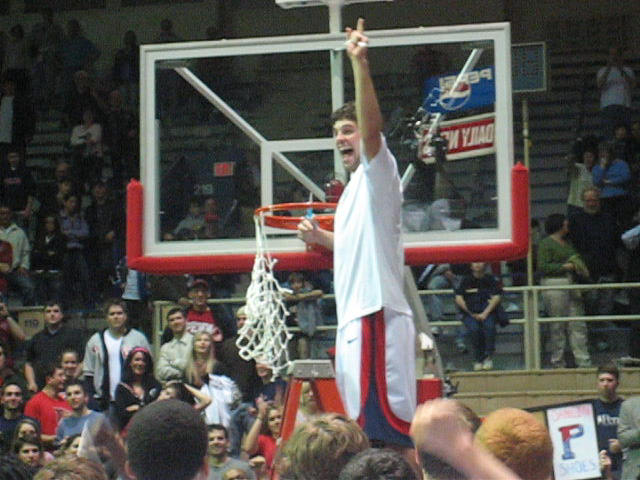 Penn basketball is steeped in tradition. Penn made its only (and the Ivy League's second) Final Four appearance in 1979, where the Quakers lost to Magic Johnson-led Michigan State Spartans, Michigan State in Salt Lake City. (Dartmouth twice finished second in the tournament in the 1940s, but that was before the beginning of formal League play.) Penn's team is also a member of the Philadelphia Big 5, along with La Salle University, La Salle, Saint Joseph's University, Saint Joseph's, Temple University, Temple and Villanova University, Villanova. In 2007, the men's team won its third consecutive Ivy League title and then lost in the first round of the NCAA Men's Division I Basketball Championship, NCAA Tournament to Texas A&M Aggies, Texas A&M. Penn last made the NCAA tournament in 2018 where it lost to top seeded University of Kansas, Kansas.
Penn basketball is steeped in tradition. Penn made its only (and the Ivy League's second) Final Four appearance in 1979, where the Quakers lost to Magic Johnson-led Michigan State Spartans, Michigan State in Salt Lake City. (Dartmouth twice finished second in the tournament in the 1940s, but that was before the beginning of formal League play.) Penn's team is also a member of the Philadelphia Big 5, along with La Salle University, La Salle, Saint Joseph's University, Saint Joseph's, Temple University, Temple and Villanova University, Villanova. In 2007, the men's team won its third consecutive Ivy League title and then lost in the first round of the NCAA Men's Division I Basketball Championship, NCAA Tournament to Texas A&M Aggies, Texas A&M. Penn last made the NCAA tournament in 2018 where it lost to top seeded University of Kansas, Kansas.
Olympic athletes
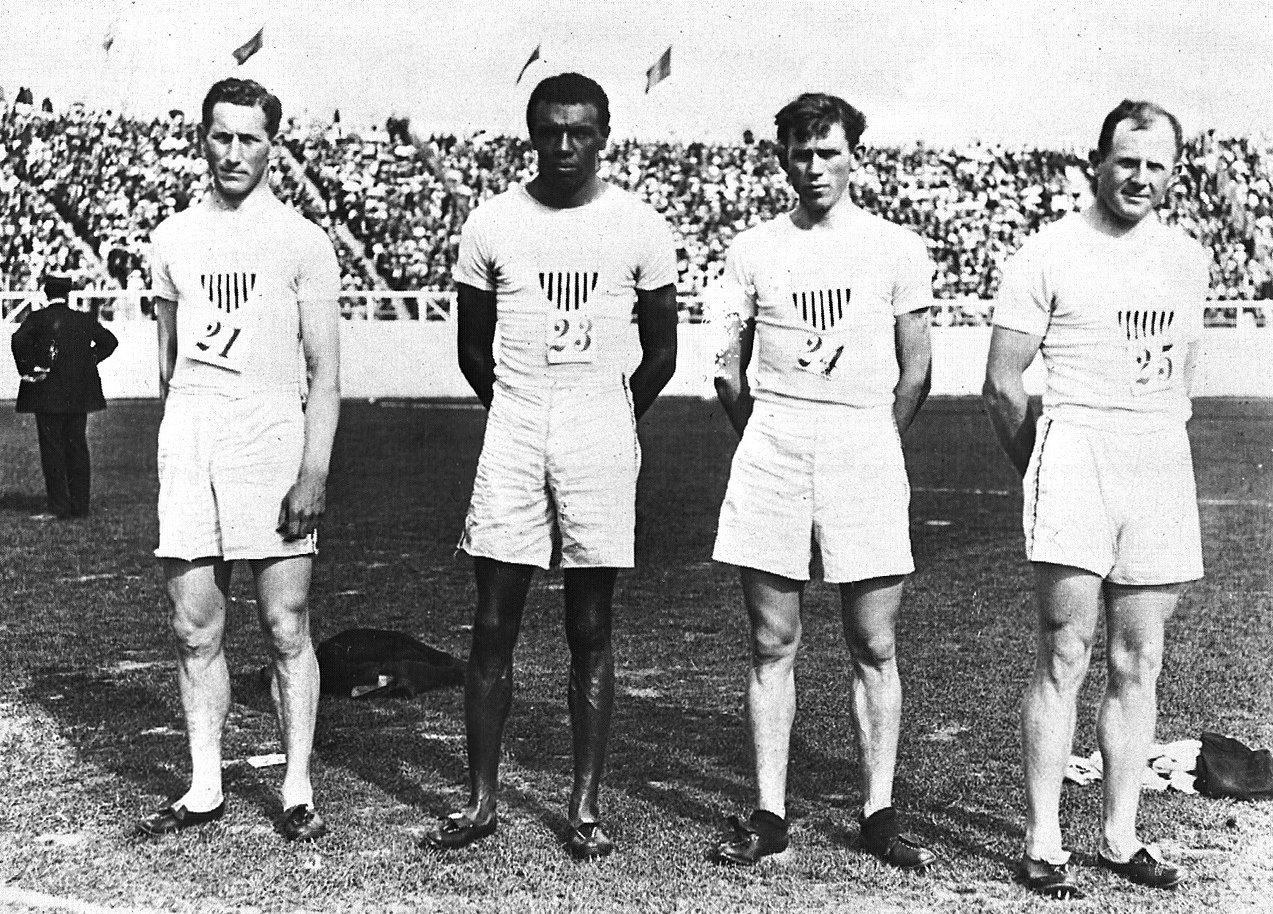 At least 43 different Penn alumni have earned 81 Olympic medals (26 gold). Penn won more of its "medals" (which were actually cups, trophies, or plaques, as medals were not introduced until a later Olympics) at Athletics at the 1900 Summer Olympics, 1900 Summer Olympics held in Paris than at any other Olympics. Penn's track and field alumni who won 21 'medals' at the 1900 Paris Olympics are: (1) Alvin Kraenzlein (University of Pennsylvania School of Dental Medicine class of 1900), known as "the father of the modern hurdling technique", who was first sportsman in the history of Olympic games to win four individual gold medals in a single discipline; (2) Josiah McCracken, MD (University of Pennsylvania School of Medicine class of 1901) who won the silver medal in the shot put and a bronze medal for the hammer throw; (3) John Walter Tewksbury (University of Pennsylvania School of Dental Medicine, Penn Dental School class of 1899) who won five 'medals' (gold in the 200 meter dash and 400 meter hurdles, silver in the 60 meter dash and 100 meter dash, and a bronze in the 200 meter hurdles); (4) Irving Baxter (University of Pennsylvania School of Law, Penn Law class of 1901) who won five "medals" (gold in both the men's high jump and men's pole vault and silver in all three of the standing jumps (long, triple, and high); (5) Meredith Colket (College Class of 1901 (BS), Penn Law class of 1904) who won the silver 'medal' in the pole vault, (6) Truxton Hare (University of Pennsylvania School of Law, Penn Law class of 1904) who won the silver 'medal' in the hammer throw (and at 1904 Summer Olympics held in St. Louis, Missouri, won (i) bronze medal in the Athletics at the 1904 Summer Olympics – Men's all-around, all-around discipline (which consisted of 100 yard run, shot put, high jump, 880 yard walk, hammer throw, pole vault, 120 yard hurdles, long jump and one mile run), and (ii) gold medal as part of United States tug of war team), and (7) George Orton (University of Pennsylvania Graduate School of Arts and Sciences class of 1894 (MA) and class of 1896 (PhD)) who (as first physically disabled Olympic athlete) won a gold 'medal' in the 2,500 meter run and a bronze metal in the 400 meter hurdles
At least 43 different Penn alumni have earned 81 Olympic medals (26 gold). Penn won more of its "medals" (which were actually cups, trophies, or plaques, as medals were not introduced until a later Olympics) at Athletics at the 1900 Summer Olympics, 1900 Summer Olympics held in Paris than at any other Olympics. Penn's track and field alumni who won 21 'medals' at the 1900 Paris Olympics are: (1) Alvin Kraenzlein (University of Pennsylvania School of Dental Medicine class of 1900), known as "the father of the modern hurdling technique", who was first sportsman in the history of Olympic games to win four individual gold medals in a single discipline; (2) Josiah McCracken, MD (University of Pennsylvania School of Medicine class of 1901) who won the silver medal in the shot put and a bronze medal for the hammer throw; (3) John Walter Tewksbury (University of Pennsylvania School of Dental Medicine, Penn Dental School class of 1899) who won five 'medals' (gold in the 200 meter dash and 400 meter hurdles, silver in the 60 meter dash and 100 meter dash, and a bronze in the 200 meter hurdles); (4) Irving Baxter (University of Pennsylvania School of Law, Penn Law class of 1901) who won five "medals" (gold in both the men's high jump and men's pole vault and silver in all three of the standing jumps (long, triple, and high); (5) Meredith Colket (College Class of 1901 (BS), Penn Law class of 1904) who won the silver 'medal' in the pole vault, (6) Truxton Hare (University of Pennsylvania School of Law, Penn Law class of 1904) who won the silver 'medal' in the hammer throw (and at 1904 Summer Olympics held in St. Louis, Missouri, won (i) bronze medal in the Athletics at the 1904 Summer Olympics – Men's all-around, all-around discipline (which consisted of 100 yard run, shot put, high jump, 880 yard walk, hammer throw, pole vault, 120 yard hurdles, long jump and one mile run), and (ii) gold medal as part of United States tug of war team), and (7) George Orton (University of Pennsylvania Graduate School of Arts and Sciences class of 1894 (MA) and class of 1896 (PhD)) who (as first physically disabled Olympic athlete) won a gold 'medal' in the 2,500 meter run and a bronze metal in the 400 meter hurdles
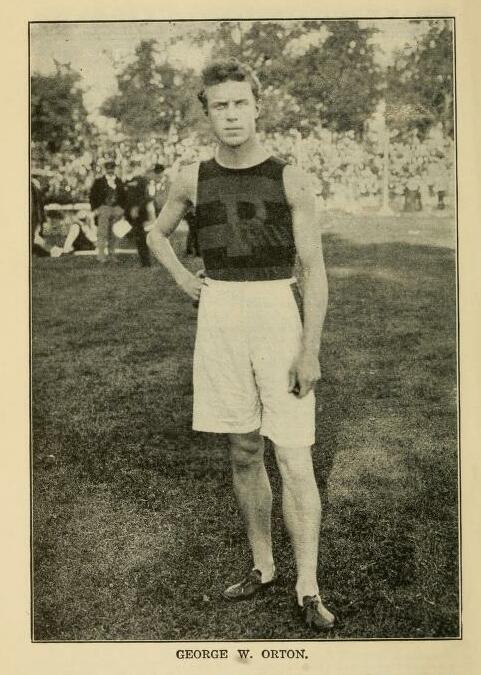 The first African American in the United States to win an Olympic gold medal at an Olympics, the 1908 Summer Olympics, 1908 London Olympics, as part of Athletics at the 1908 Summer Olympics – Men's medley relay, Medley relay where he ran the third leg, the 400 meters, was John Taylor (athlete), John Taylor (University of Pennsylvania School of Veterinary Medicine (class of 1908)). Taylor was followed by William Hamilton (athlete), William Hamilton and Nathaniel Cartmell, Nate Cartmell (fellow Penn athlete).
In the 2020 Summer Olympics held in Tokyo, Japan, in summer of 2021, nine Penn students and alumni played in six different sports from six different countries.
The first African American in the United States to win an Olympic gold medal at an Olympics, the 1908 Summer Olympics, 1908 London Olympics, as part of Athletics at the 1908 Summer Olympics – Men's medley relay, Medley relay where he ran the third leg, the 400 meters, was John Taylor (athlete), John Taylor (University of Pennsylvania School of Veterinary Medicine (class of 1908)). Taylor was followed by William Hamilton (athlete), William Hamilton and Nathaniel Cartmell, Nate Cartmell (fellow Penn athlete).
In the 2020 Summer Olympics held in Tokyo, Japan, in summer of 2021, nine Penn students and alumni played in six different sports from six different countries.
Facilities
 Franklin Field (with seats for 52,593 fanshttps://pennathletics.com/news/2018/12/21/general-historic-moments.aspx retrieved October 6, 2022) is where the Quakers play football, field hockey, lacrosse, sprint football and track and field (and formerly baseball, soccer, and rugby). It is the oldest stadium still operating for football games, the first stadium to sport two tiers, and first stadium in the country to have a scoreboard. It hosted the first ever football radio broadcast (in 1922) and first commercially televised football game (in 1940) and was site of first ever use of use of instant replay (in 1963). Franklin Field also played host to the Philadelphia Eagles from 1958 to 1970 (where installation of artificial turf in 1969 caused it to be first NFL stadium to have such artificial turf), and was the site of 18 Army–Navy Game, Army–Navy games between 1899 and 1935.
Today it is also used by Penn students for recreation such as intramural sports, intramural and club sports, including Touch football (American), touch football and cricket. Franklin Field hosts the annual collegiate track and field event "the Penn Relays."
Penn's home court, the Palestra, is an arena used for men's and women's basketball teams, volleyball teams, wrestling team, and Philadelphia Big Five basketball, as well as high school sporting events. The Palestra has hosted more NCAA Tournament basketball games than any other facility. Penn staff and students make use of the Palestra to play and/or watch basketball, volleyball, and fencing. Penn's River Fields hosts a number of athletic fields including the Rhodes Soccer Stadium (for both women's and men's soccer, which includes elevated stands for 650 spectators, a 180-degree rotating scoreboard, and the Rapaport Family Suite), the Ellen Vagelos C'90 Field Hockey Field (with special artificial turf), and Irving "Moon" Mondschein Throwing Complex (for javelin, shot put, discus, and Hammer throw). In addition, Penn baseball plays its home games at Meiklejohn Stadium at Murphy Field.
The 1980 Olympic boycott, Olympic Boycott Games of 1980 was held at the University of Pennsylvania in response to Moscow's hosting of the 1980 Summer Olympics following the Soviet–Afghan War, Soviet incursion in Afghanistan. Twenty-nine of the boycotting nations participated in the Boycott Games.
Franklin Field (with seats for 52,593 fanshttps://pennathletics.com/news/2018/12/21/general-historic-moments.aspx retrieved October 6, 2022) is where the Quakers play football, field hockey, lacrosse, sprint football and track and field (and formerly baseball, soccer, and rugby). It is the oldest stadium still operating for football games, the first stadium to sport two tiers, and first stadium in the country to have a scoreboard. It hosted the first ever football radio broadcast (in 1922) and first commercially televised football game (in 1940) and was site of first ever use of use of instant replay (in 1963). Franklin Field also played host to the Philadelphia Eagles from 1958 to 1970 (where installation of artificial turf in 1969 caused it to be first NFL stadium to have such artificial turf), and was the site of 18 Army–Navy Game, Army–Navy games between 1899 and 1935.
Today it is also used by Penn students for recreation such as intramural sports, intramural and club sports, including Touch football (American), touch football and cricket. Franklin Field hosts the annual collegiate track and field event "the Penn Relays."
Penn's home court, the Palestra, is an arena used for men's and women's basketball teams, volleyball teams, wrestling team, and Philadelphia Big Five basketball, as well as high school sporting events. The Palestra has hosted more NCAA Tournament basketball games than any other facility. Penn staff and students make use of the Palestra to play and/or watch basketball, volleyball, and fencing. Penn's River Fields hosts a number of athletic fields including the Rhodes Soccer Stadium (for both women's and men's soccer, which includes elevated stands for 650 spectators, a 180-degree rotating scoreboard, and the Rapaport Family Suite), the Ellen Vagelos C'90 Field Hockey Field (with special artificial turf), and Irving "Moon" Mondschein Throwing Complex (for javelin, shot put, discus, and Hammer throw). In addition, Penn baseball plays its home games at Meiklejohn Stadium at Murphy Field.
The 1980 Olympic boycott, Olympic Boycott Games of 1980 was held at the University of Pennsylvania in response to Moscow's hosting of the 1980 Summer Olympics following the Soviet–Afghan War, Soviet incursion in Afghanistan. Twenty-nine of the boycotting nations participated in the Boycott Games.
Notable people
Gallery
"He Won't Back Down: Elon Musk"
, ''Wharton Magazine''. Tesla, Inc., Tesla,"Entrepreneur Elon Musk: Why It's Important to Pinch Pennies on the Road to Riches"
, Knowledge@Wharton, May 27, 2009. SpaceX,SpaceX Leadership: Elon Musk
, SpaceX, November 21, 2011. OpenAI, The Boring Company, Neuralink and Twitter. File:Tory Burch.jpg, Tory Burch, fashion designer and founder of Tory Burch LLC File:John Legend 2019 by Glenn Francis.jpg, John Legend, musician and recipient of List of people who have won Academy, Emmy, Grammy, and Tony Awards, Academy, Emmy, Grammy, and Tony Awards File:Prusiner 1.JPG, Stanley B. Prusiner, neurologist and biochemist, recipient of the Nobel Prize in Physiology or Medicine File:Christian B. Anfinsen, NIH portrait, 1969.jpg, Christian B. Anfinsen, biochemist, recipient of the Nobel Prize in Chemistry File:I.M. Pei.JPG, I. M. Pei, Pritzker Architecture Prize, Pritzker Prize-winning architect
Overview
Penn has produced many alumni that have distinguished themselves in the sciences, academia, politics, business, military, arts, and media. Some eleven heads of state or government have attended or graduated from Penn, including former president Donald Trump; former president William Henry Harrison, who attended the medical school for less than a semester; former prime minister of the Philippines Cesar Virata; the first president of Nigeria, Nnamdi Azikiwe; the first president of Ghana, Kwame Nkrumah; and the current president of Ivory Coast, Alassane Ouattara. Other notable politicians who hold a degree from Penn include India's former minister of state for finance Jayant Sinha, former ambassador and Utah governor Jon Huntsman, Jr., Mexico's current minister of finance, Ernesto J. Cordero, former Pennsylvania senator Arlen Specter, and former Pennsylvania governor and DNC chair Ed Rendell. The university's presence in the judiciary in and outside of the United States is also notable. It has produced three United States Supreme Court justices, William J. Brennan, Owen J. Roberts and James Wilson (Founding Father), James Wilson; Supreme Court justices of foreign states (e.g., Ronald Wilson of the High Court of Australia, Ayala Procaccia of the Israel Supreme Court, Yvonne Mokgoro, former justice of the Constitutional Court of South Africa); and Irish Court of Appeal (Ireland), Court of Appeal justice Gerard Hogan. Penn is also a top feeder school for careers in finance and investment banking on Wall Street and its alumni have a strong presence in financial and economic life. Indeed, Penn alumni include 64 living billionaires, 28 of whom are undergraduate alumni billionaires (as Penn has the second highest number of undergrad billionaire alumni with only Harvard [with only one more (but Penn undergraduate alumni billionaires have accumulated over 65 billion more in wealth than Harvard's)], Penn has educated several governors of central banks including Dawne Williams ( St. Kitts-Nevis-Anguilla National Bank), Yasin Anwar (State Bank of Pakistan), Ignazio Visco (Bank of Italy), Kim Choongsoo (Bank of Korea), Zeti Akhtar Aziz (Central Bank of Malaysia), Pridiyathorn Devakula (governor, Bank of Thailand, and former minister of finance), Farouk El Okdah (Central Bank of Egypt) and Alfonso Prat Gay (Central Bank of Argentina), as well as the director of the United States National Economic Council, Gene Sperling. Other alumni include Warren Buffett (CEO of Berkshire Hathaway), Steven A. Cohen (founder of SAC Capital Advisors), and Robert Kapito (president of BlackRock, the world's largest asset manager). Penn alumni who are founders of technology companies include Ralph J. Roberts (co-founder of Comcast); Elon Musk (co-founder of PayPal, Tesla, Inc., Tesla, OpenAI and Neuralink, founder of SpaceX and The Boring Company); Leonard Bosack (co-founder of Cisco); David J. Brown (computer scientist), David J. Brown (co-founder of Silicon Graphics) and Mark Pincus (founder of Zynga, the company behind FarmVille). Among other distinguished alumni are the current or past presidents of over one hundred universities including Harvard University (Drew Gilpin Faust, Harvard's first female president), Cornell University (Martha E. Pollack), Penn (Judith Rodin, first female president in the Ivy League), Princeton University (Harold Dodds), the University of California (Mark Yudof), Carnegie Mellon University (Jared Cohon), and Northwestern University (Morton O. Schapiro). Penn's alumni also include poets William Augustus Muhlenberg, Ezra Pound and William Carlos Williams; linguist and political theorist Noam Chomsky; architect Louis Kahn; cartoonist Charles Addams; actresses Candice Bergen and Elizabeth Banks; journalist Joe Klein; TV producer Shabnam Rezaei; fashion designer Tory Burch; multidisciplinary artist Kamau Amu Patton; and alumni who have won 20 Tony Awards, 16Alumni relations and inter-Ivy events
In addition to active alumni chapters globally, in 1989, the university bought a 14-story clubhouse building (purpose-built for Yale Club of New York City, Yale Club) in New York City from Touro College for $15 million to house Penn's largest alumni chapter. After raising a separate $25 million (including $150,000+ donations each from such alumni as Estée Lauder (businesswoman), Estee Lauder heirs, Leonard Lauder and Ronald Lauder, Saul Steinberg (businessman), Saul Steinberg, Michael Milken, Donald Trump, and Ronald Perelman) and two years of renovation, the Penn Club of New York moved to its current location at 30 West 44th Street on NYC's Clubhouse Row across the street from the Harvard Club of New York, a block west of the Cornell Club of New York, and two blocks west of the Yale Club of New York City. It also is one block north of the Princeton Club of New York and joins with those clubs in inter-Ivy events. Although its university is located in the Morningside Heights section of Manhattan, the Columbia University Club of New York does not have its own clubhouse and shares the 30 West 44th Street clubhouse with the Penn Club. The New York region of the university maintains an office in the Penn Club.See also
* List of universities by number of billionaire alumni * Education in Philadelphia * Think Tanks and Civil Societies Program (TTCSP) * University of Pennsylvania PressNotes
References
External links
*University of Pennsylvania athletics website
{{DEFAULTSORT:Pennsylvania, University Of University of Pennsylvania, 1740 establishments in Pennsylvania Collegiate Gothic architecture in the United States Colonial colleges Eastern Pennsylvania Rugby Union Educational institutions established in 1740 Gothic Revival architecture in Pennsylvania Philadelphia Big 5 Private universities and colleges in Pennsylvania, University of Pennsylvania Universities and colleges in Philadelphia University City, Philadelphia